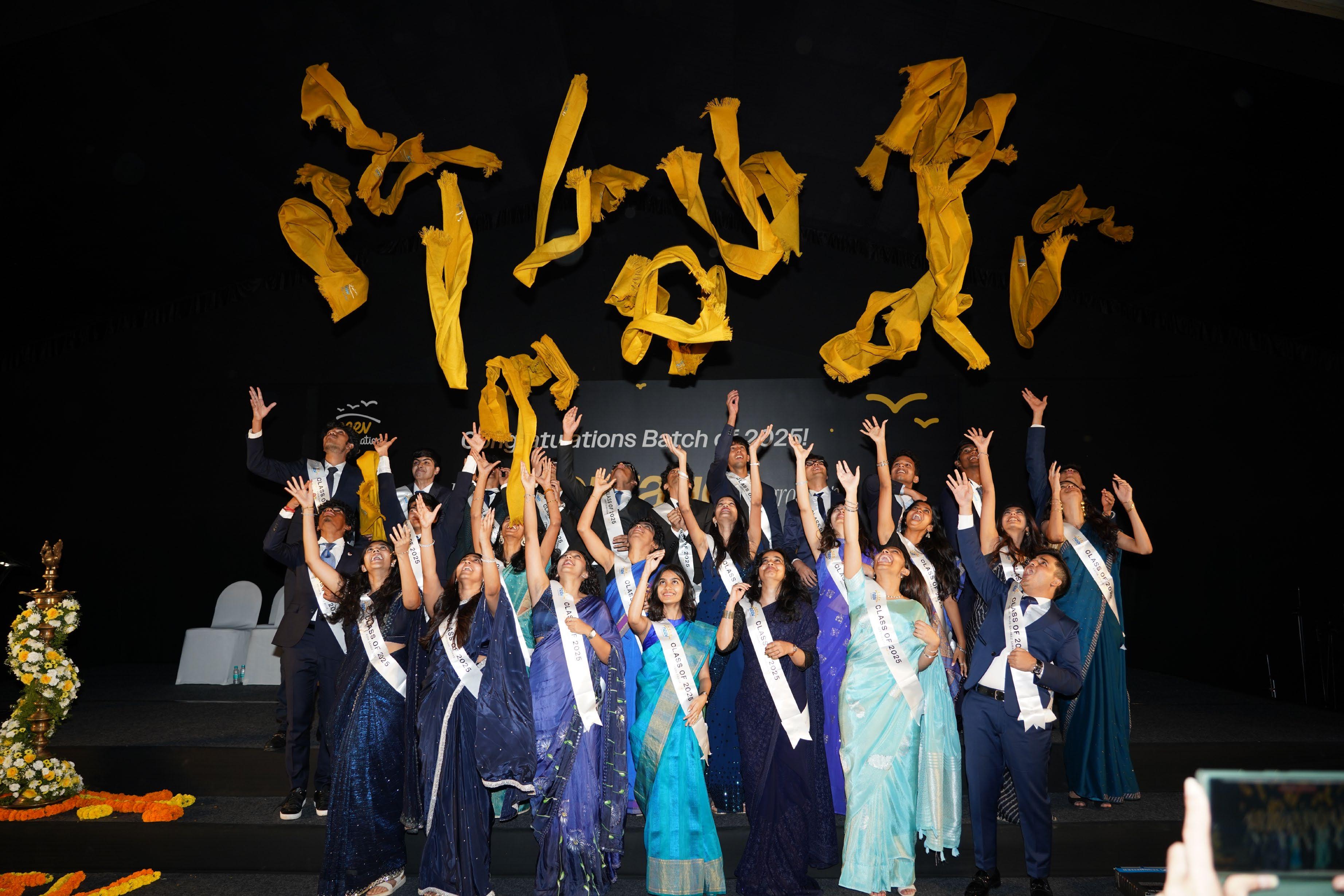


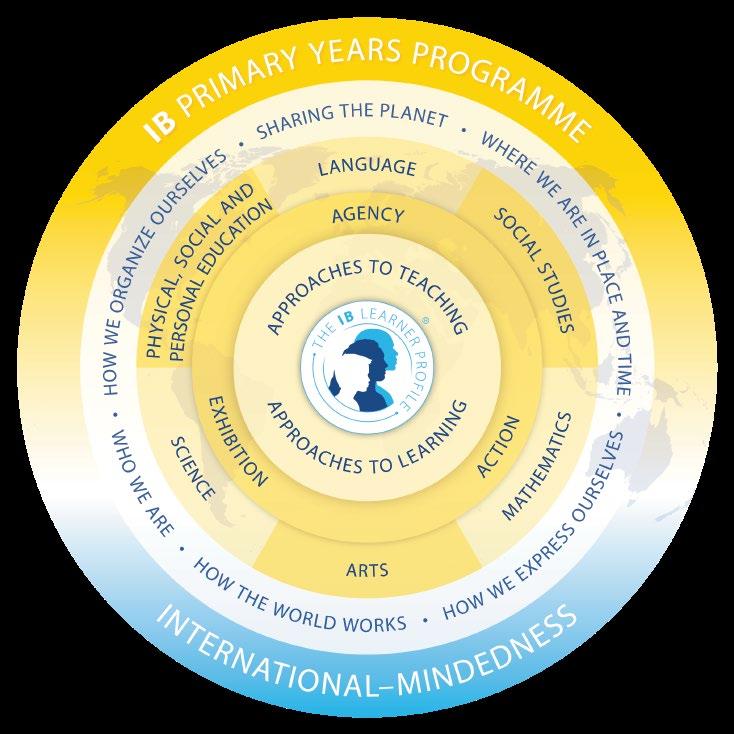
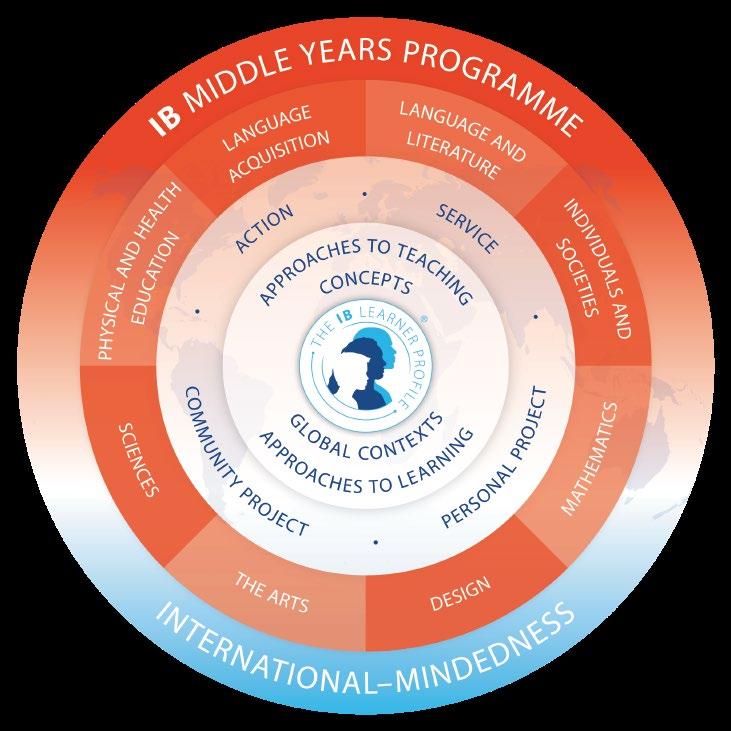

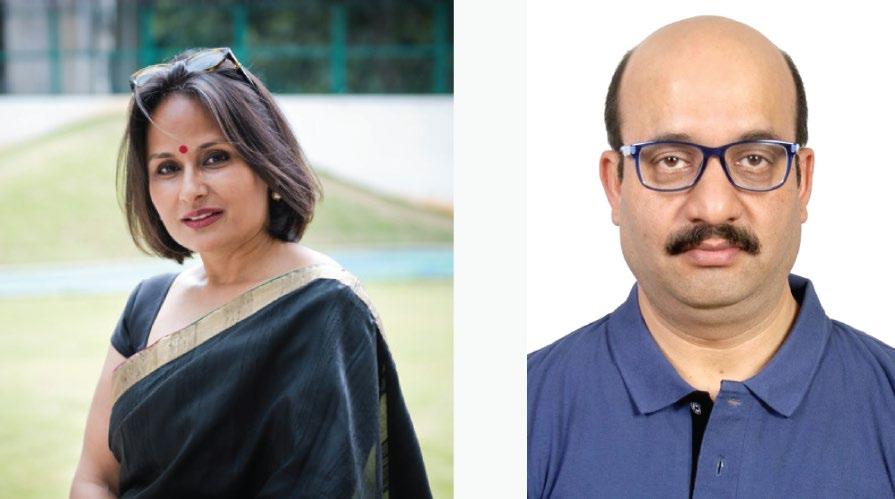
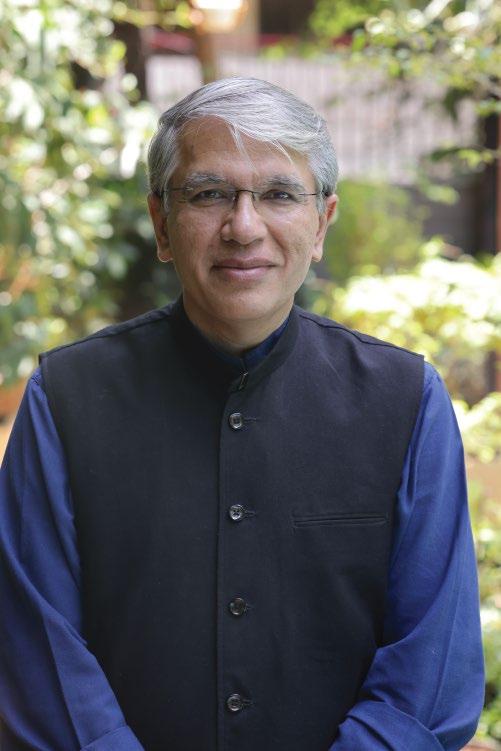


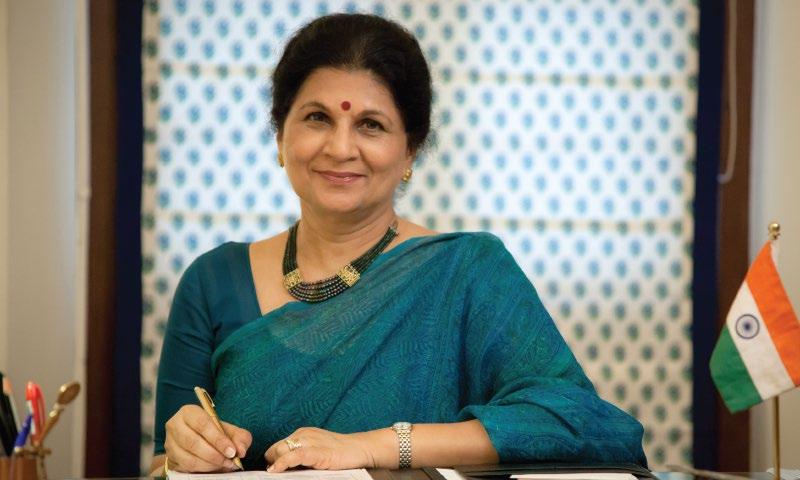
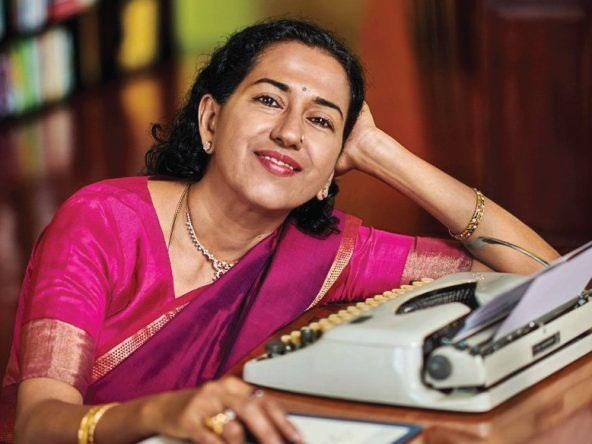
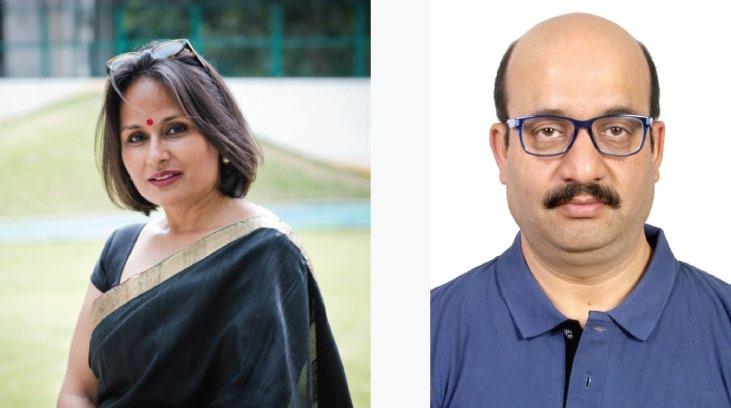

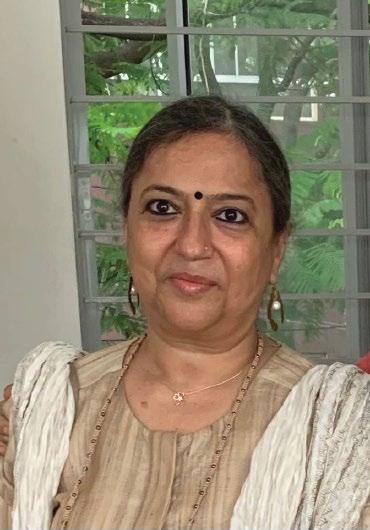
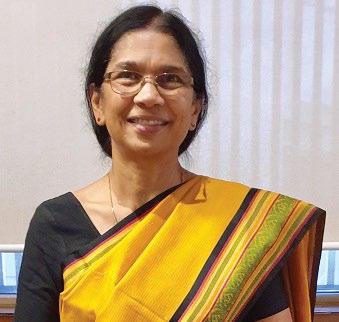


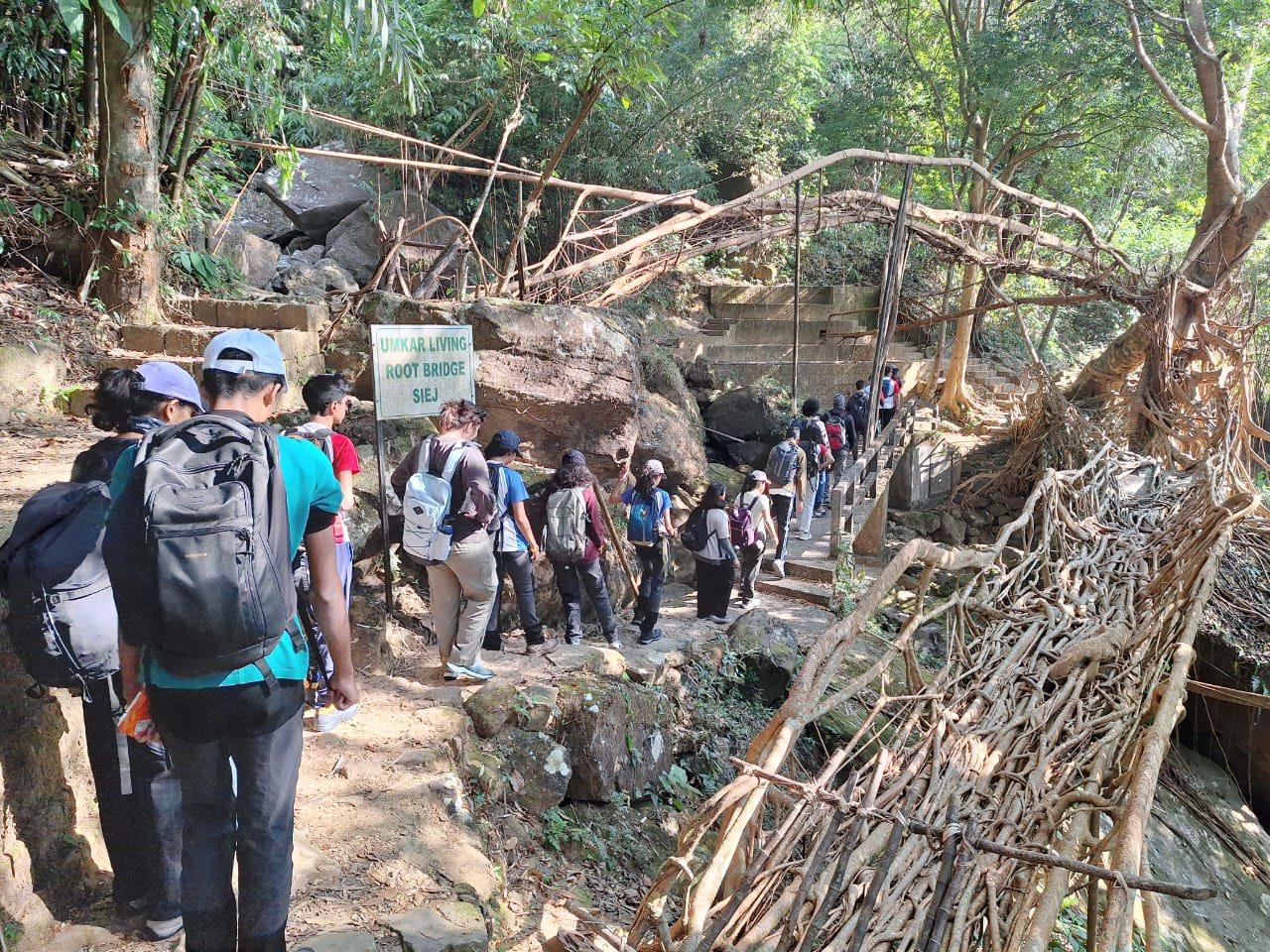





















“Education is not preparation for life; education is life itself.” – John Dewey
Having been instrumental in setting up the Diploma Programme at Neev, I’m elated to be back as IBDP Head, returning to a space where education is reimagined in a changing India. Neev is a place where students are nurtured to build knowledge, self-awareness, and meaningful relationships with people and the environment, in pursuit of happy, healthy, and impactful lives.
My educational philosophy is rooted in helping students discover the gift of life through education. I believe learning should shape values, build life skills, and foster strong partnerships between schools, students, and families. For me, education is not just about academic success, it’s about nurturing character, wellbeing, and a sense of purpose.
With two decades in international education across IB World Schools in India, I’ve had the privilege to serve as an IB Senior Examiner, Exchange Moderator, DP Programme Leader, MYP/DP Workshop Leader, and NEASC and CIS Visitor. I have led dedicated teams through successful authorization, programme evaluations, and curriculum innovations.
As a leader, I strive to empower students and colleagues to take ownership of their growth, and to foster a culture of trust, reflection, and continuous improvement. Students’ curiosity, their ideas, dreams and most importantly their resilience, remind me of the true purpose of education.
I invite every member of our community to join me in shaping an environment where learning is joyful, purposeful, and enduring.
Let’s continue this journey together. With gratitude
Abhinav Awasthi
SUBJECTS OFFERED AT NEEV ACADEMY
ENGLISH A: LANGUAGE AND LITERATURE (SL & HL)
ENGLISH A: LITERATURE (SL & HL)
HINDI B (SL & HL)
FRENCH B (SL)
FRENCH ABINITIO
SPANISH B (SL)
SPANISH ABINITIO
BUSINESS MANAGEMENT (SL & HL)
ECONOMICS (SL & HL)
HISTORY (SL & HL)
GEOGRAPHY (SL & HL)
PSYCHOLOGY (SL & HL)
GLOBAL POLITICS (SL & HL)
PHYSICS (SL & HL)
CHEMISTRY (SL & HL)
BIOLOGY (SL & HL)
ENVIRONMENTAL SYSTEMS AND SOCIETIES (SL & HL)
COMPUTER SCIENCE (SL & HL)
MATHEMATICS ANALYSIS & APPROACHES (SL & HL)
MATHEMATICS APPLICATION & INTERPRETATION (SL & HL)
VISUAL ARTS (SL & HL)
At Neev Academy, both external students as well as our own MYP/ICSE students can gain admission in IB diploma Programme. Here are separate requirements to be fullfilled for admission to DP.
External students must be pursuing grade 10 study from any Indian/International Board(CBSE/ICSE/State boards/IGCSE/MYP) and are required to submit documentary evidence of completing the same within three months of declaration of result by the respective board/s. External students will also be appearing for entrance test in the subjects: English and mathematics.
Neev Academy Grade 10 pass certificate will be required for our own MYP & ICSE students seeking admission to Diploma Programme. Internal students are not expected to appear for entrance test for admission to DP.
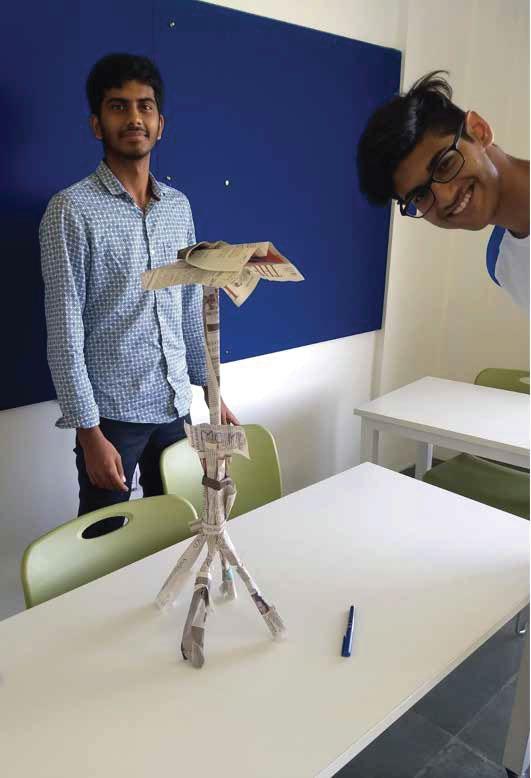
Students will have opportunities to explore various non-literary texts and forms of literature from across different cultures. Students will be expected to analyze non-literary texts and literary works across a number of forms and from different times and places. There will be opportunities for students to consider their own interpretations as well as the perspectives of others to understand how these perspectives are shaped by the culture they belong to and how meaning is created in this process. In this course, students will be able to communicate their responses in a variety of communicative acts. These courses offer scope for students to contribute to their construction in the choice of texts and in the nature of the internal assessment that corresponds to these texts. This will be done as a part of a dialogue and under the guidance of a teacher while referencing the stipulations and requirements of the course found in the subject guide. Students record the process of arriving at these selections in a learner portfolio. Literary texts are chosen from poetry, fiction, non-fiction and drama, Non-literary texts are chosen from a wide variety of text types, most of which are encountered every day-editorials, advertisements, cartoons, magazine covers etc.
Students will analyze at least 4 literary works at standard level and at higher level.
The literary works studied include
Ibsen's "A Dol's House". Euripide's "Medea". Satrapia "Persepolis", William's "A Streetcar Named Desire". Margaret Atwood's poems and others
SL/HL: Individual Oral
This component requires the skills of communication, close reading and analysis.
Students will choose a global issue and examine the ways in which this issue is presented through extracts from a literary work and a non-literary text. They also explore he global issue in the larger work/body of work.
The student speaks for 10 minute followed by 5 minutes of questions by the teacher, Weighting: SL: 30% HL: 20%
Paper 1: From two unseen non-literary passages, students choose one and write an analysis. [75 minutes, 35% weighting]
Paper 2: Students select one question out of four general questions and write an essay comparing two literary works studied in the course. [105 minutes, 35% weighting]
HL
Paper 1: The paper consists of two unseen non-literary passages, Students write an analysis of each of the passages. [135 minutes, 35% weighting]
Paper 2: Students select one question out of four general questions and write an essay comparing two literary works studied in the course. [105 minutes, 25% weighting]
HL essay: Students submit an essay on a literary text or a non-literary text studied in the course. The essay must be 1200-1500 words in length. [20% weighting]
In this course students will explore a range of literary work. Students will be expected to analyze these literary texts across a number of forms and from different times and places. There will be opportunities for students to consider their own interpretations as well as the perspectives of others to understand how these perspectives are shaped by the culture they belong to and how meaning is created in this process. In this course, students will be able to communicate their responses in a variety of communicative acts. These courses offer scope for students to contribute to their construction in the choice of texts and in the nature of the internal assessment that corresponds to these texts. This will be done as a part of a dialogue and under the guidance of a teacher while referencing the stipulations and requirements of the course found in the subject guide. Students record the process of arriving at these selections in a leamer portfolio.
Literary texts are chosen from poetry, fiction, non-fiction and drama. The courses require extensive reading and engagement with a substantial number these texts in order to be able to interpret, analyze and evaluate them.
Students will analyse 7 literary works at standard level 10 at higher level. These texts include 'Manto's Mottled Dawn', T.S Eliot's 'The Wasteland", Satrapi's 'Persepolis', Williams's 'A Streecar Named Desire', Ibsen's 'A Doll's House', Euripide's 'Medea', Strindberg's 'Miss Julie', Soseki's "Kokoro", and others.
Option 1: Indian Fiction
Lahir's The Namesake, Tamas, Karmad's Hayavadana or
Option 2: Gothic Fiction Shakespeare's Hamlet, Shelley's Frankenstein, Lindsay's Picnic at Hanging Rock or
Option 3: Dystopic Fiction Orwell's 1984, Ogawa's 'Memory Police', Beckett's 'Waiting for Godot'.
SL/HL: Individual Oral
This component requires the skills of communication, close reading and analysis. Students will choose a global issue and examine the ways in which this Issue is presented through extracts from two literary work.
The student speaks for 10 minutes followed by 5 minutes of questions by the teacher.
Weighting: SL: 30% HL: 20%
Paper 1: From two literary passages, students choose one and write an analysis. [75 minutes, 35% weighting)
Paper 2: Students select one question out of four general questions and write an essay comparing two literary works studied in the course. [105 minutes, 35% weighting]
HL:
Paper 1: The paper consists of two literary passages. Students write an analysis of each of the passages. [135 minutes, 35% weighting]
Paper 2: Students select one question out of four general questions and write an essay comparing two literary works studied in the course. [105 minutes, 25% weighting|
HL essay: Students submit an essay on one literary text studied in the course. The essay must be 1200-1500 words in length. [20% weighting]
Language B course aims to develop international-mindedness through the study of language, culture, and ideas and issues of global significance. Students develop the ability to communicate in the target language through the study of language, themes and texts. The five prescribed themes are: Identities, Experiences, Human ingenuity, Social organization and Sharing the planet. Students who have had some previous experience with a language can opt for language B.
While developing the ability to communicate in the target language, students develop conceptual understandings of how language works. Communication is evidenced through receptive, productive and interactive skills across a range of contexts and purposes that are appropriate to the level of the course. Students expand the range of their communication skills by understanding and producing a wide variety of oral and written texts for audiences, contexts and purposes associated with academic and personal interests. For the development of receptive skills, language B students must study authentic texts that explore the culture(s) of the target language.
HL (Additional requirement) Study of two literary works.
Paper 1: Productive skills (writing): 75 minutes, 25% weighting
Paper 2: Receptive skills 105 minutes, 50% weighting
Listening comprehension: 45minutes, 25% weighting
Reading comprehension: 60minutes, 25% weighting
Paper 1: Productive skills (writing) 90 minutes, 25% weighting
Paper 2 Receptive skills 2 hours, 50% weighting
Listening comprehension (1h)
Reading comprehension (1h)
This course develops international-mindedness through the study of language, culture, ideas and issues of global significance. Language ab initio aims to develop the ability of a student to communicate in the target language through the study of language, themes and texts. The five prescribed themes are Identities, Experiences, Human ingenuity, Social organization and Sharing the planet. Students with no previous experience of a language can opt for this course.
While developing the ability to communicate in the target language, students develop conceptual understandings of how language works. Communication is evidenced through receptive, productive and interactive skills across a range of contexts and purposes that are appropriate to the level of the course. Students expand the range of their communication skills by understanding and producing a wide variety of oral and written texts for audiences, contexts and purposes associated with academic and personal interests. For the development of receptive skills, language ab initio students must study authentic texts that explore the culture(s) of the target language.
Paper 2: Receptive skills 105 minutes, 50% weighting
Listening comprehension (45m)-25% weighting
Reading comprehension (1h)-25% weighting

1.1 What is economics?
1.2 How do economists approach the world?
2.1 Demand
2.2 Supply
2.3 Competitive market equilibrium
2.4 Critique of the maximizing behavior of consumers and producers
2.5 Elasticity of demand
2.6 Elasticity of supply
2.7 Role of government in microeconomics
2.8 Market failure extermalities and common pool or common access resources
2.9 Market failure public goods
2.10 Market failure asymmetric information
2.11 Market failure market power
2.12 The market's inability to achieve equity HL
3.1 Measuring economic activity and illustrating its variations
3.2 Variations in economic activity aggregate demand and aggregate supply
3.3 Macroeconomic objectives
3.4 Economics of inequality and poverty
3.5 Demand management (demand side policies) monetary policy
3.6 Demand management fiscal policy
3.7 Supply-side policy
4.1 Benefits of international trade
4.2 Types of trade protection
4.3 Arguments for and against trade control/protection
4.4 Economic integration
4.5 Exchange rates
4.6 Balance of payments
4.7 Sustainable development
4.8 Measuring development
4.9 Barriers to economic growth and/or economic development
4.10 Economic growth and/or economic development strategies
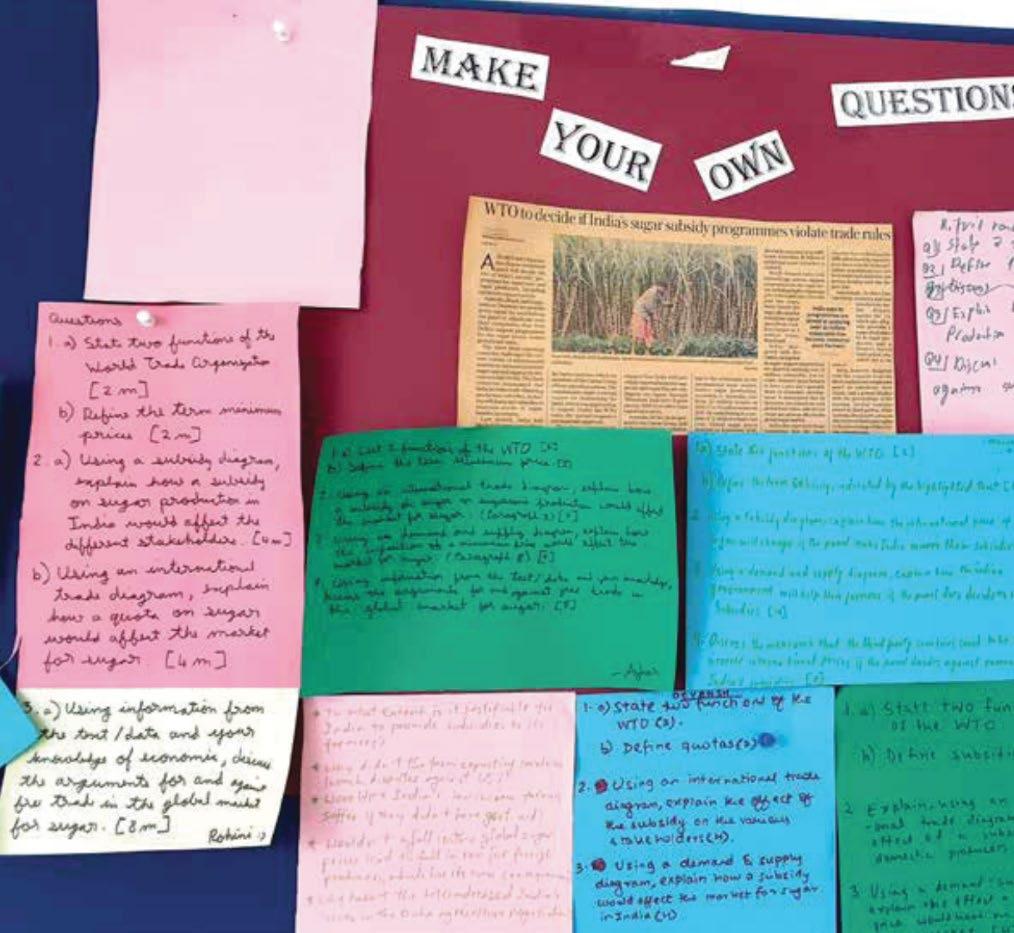
Geography is a dynamic subject that is firmly grounded in the real world and focuses on the interactions between Individuals, societies and the physical environment in both time and space. It seeks to identify trends and patterns in these interactions and examines the processes behind them. Geography is distinctive in that it occupies the middle ground between social sciences and natural sciences. The DP geography course integrates both physical and human geography, and ensures that students acquire elements of both scientific and socio-economic methodologies.
Part 1: Geographic themes (seven options)
Two options are studied at SL and three at HL
Option A: Freshwater diainege basins
Option B: Oceans and coastal margins
Option C: Extreme environments
Option D: Geophysical hazards
Option E: Leisure, tourism and sport
Option G: Urban environments
Option F: Food and health
Part 2: SL and HL core Geographic perspectives-global change
Unit 1: Population Ditribution
Unit 2: Global climate-vulnerability and resilience
Unit 3: Global resource consumption and security
Part 2: HL core extension
Geographic perspectives-global interactions
Linit 4: Power, places and networks
Unit 5: Human development and diversity
Unit 6: Globel risks and resilience
SL: Written raport based on a fieldwork question: 20 hours, weighting 25% (25 marks)
HL: Written report based on a fieldwork question: 20 hours, weighting 20% 125 marks
SL
Paper 1 is based on geographic themes two options, each option has a structured question and one extended answer question from a choice of two [40 marks] 90 minutes, 35% weighting]
Paper 2 is based on geographic perspectives global change: Three structured questions, based on each SL/HL core unit. Infographic or visual stimulus, with structured questions and one extended answer question from a choice of two. 150 marks 75 minutes, 40% weighting HL
Paper 1 is based on geographic themes three options: each option has a structured question and one extended answer question from a choice of two choice of two. 160 marks 135 minutes, 35% weighting
Paper 2 is based on geographic perspectives global change: three structured questions, based on each SL/HL core unit. Infographic or visual stimulus, with structured questions and one extended answer question from a choice of two two. [50 marks] 75 minutes, 25% weighting
Paper 3 is based on geographic perspectives global Interactions. Choice of three extended answer questions. with two parts, based on each HL core unit. 128 marks 60 minutes, 20% weighting
Core
Biologica Cognitive
• Sociocultural
• Research Methodology
Options
• Abnormal
• Human Development
• Health and well-being
• Learning and Cognition
• Human relationships
Concepts
• 6 Concepts
A report on an experimental study undertaken by the student
Paper 1
Three short answer questions on the core. One essay from a choice of three on the biological, cognitive and sociocultural approaches. HL only: essays will reference additional HL topic
Paper 2
SL: one question from a choice of three on one option. HL: two questions; one each from a choice of three on two options.
Paper 3
Three short answer questions on approaches to research.
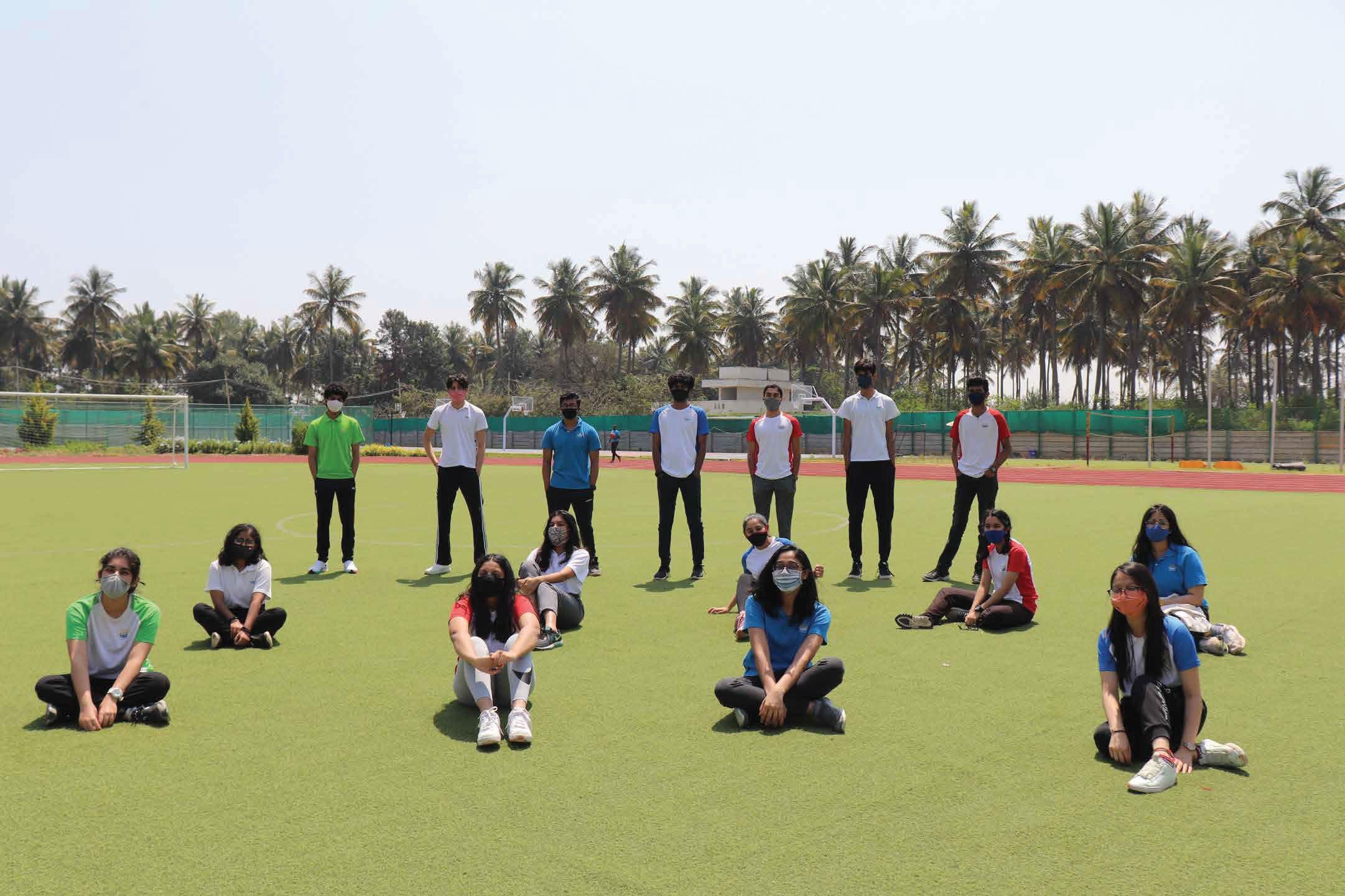
The Global Politics course, as part of the International Baccalaureate Diploma Program's Individuals and Societies subject group, offers students an insightful exploration into the intricate world of politics at varying levels - local, national, international, and global. It encourages a systematic and critical examination of key political concepts, contemporary political issues, and the multifaceted nature of political activities. Students are fostered to appreciate diverse perspectives, recognizing that human attitudes, beliefs, and interpretations of political matters are open, contestable and require the tolerance of uncertainty. The course aims to develop skills that enable students to critically analyze theories, concepts, arguments, and data within the realm of global politics. Ultimately, it highlights the relevance of global political study to students' own culture and other societies, underscoring the interconnectedness and complexity of political issues across the globe.
Core topics: Understanding power and global politics Thematic studies:-
1. Rights and Justice
2. Development and Sustainability
3. Peace and conflict
Engagement activity
An engagement on a political issue of personal interest, complemented with research.
HL Extension: Global political challenges
Political issues in two of the following six global political challenges are researched and presented through a case study approach.
For HL:
1) Engagement Project: Marks: Maximum of 30 marks Weightage: 20% of final grade
External Assessment SL Paper 1(1 hour 15 minutes)
Source-based paper that draws from the common SLand HL core topics. Candidates answer four compulsory structured questions. (25 marks) 30%
Weightage
Paper 2(1 hour 45 minutes)
Extended response paper based on the common SL and HL thematic studies. Candidates must answer two questions: one essay from section A (comprising questions rom each of the thematic studies) and one essay from section B (comprising integrating questions). (30 marks) 40% weightage
External Assessment HL Paper 1(1 hour 15 minutes)
Source-based paper that draws from the common SL and HL core topics. Candidates answer four compulsory structured questions. (25 marks) 20% weightage
Paper 2(1 hour 45 minutes)
Extended response paper based on the common SL and HL thematic studies. Candidates must answer two questions: one essay from section A (comprising questions from each of the thematic studies) and one essay from section B (comprising integrating questions). (30 marks) - 30%
weightage
Paper 3(1 hour 30 minutes)
Stimulus-based paper related to the HL extension syllabus (global political challenges). Candidates must respond to three questions drawing from their researched case studies. (28 marks) - 30% weightage


A Space, time and motion
A.1 Kinematics
A.2 Forces and momentum
A.3 Work, energy and power
A.4 Rigid body mechanics
A.5 Galilean and special relativity
B. The particulate nature of matter
B.1 Thermal energy transfers
B.2 Greenhouse effect
B.3 Gas laws
B.4 Thermodynamics
B.5 Current and circuits
C. Wave behaviour
C.1 Simple harmonic motion
C.2 Wave model
C.3 Wave phenomena
C.4 Standing waves and resonance
C.5 Doppler effect
D. Fields
D.1 Gravitational fields
D.2 Electric and magnetic fields
D.3 Motion in electromagnetic fields
D.4 Induction
E. Nuclear and quantum physics
E.1 Structure of the atom
The internal assessment consists of one task: the scientific investigation.
The outcome of the scientific investigation will be assessed through the form of a written report. The maximum overall word count for the report is 3,000 words.
Paper 1-1 hour and 30 minutes, Weighting: 36% Marks: 45
Paper 1 is presented as two separate booklets
Paper 1A-25 marks
30 multiple-choice questions on standard-level material only No marks are deducted for incorrect answers
Paper 1B-20 marks
Data-based questions. Questions on experimental work
Paper 2- Short answer and extended response questions, 1 hour and 30 minutes Weighting: 44%, Marks: 50

E.2 Quantum physics
E.3 Radioactive decay
E.4 Fission
E.5 Fusion and stars
This component is internally assessed by the teacher and externally moderated by the IB at the end of the course.20% weightage.

HL:
Paper 1-2 hours, Weighting: 36% Marks:60
Paper 1 is presented as two separate booklets
Paper 1A-40 marks
40 multiple-choice questions on a standard level and additional higher-level material
No marks are deducted for incorrect answers.
Paper 1B-20 marks
Data-based questions.Questions on experimental work
HL-Paper 2-Short answer and extended response questions, 2 hours and 30 minutes Weighting: 44%, Marks: 90
Structure 1. Models of the particulate nature of matter
Structure 1.1 - Introduction to the particulate nature of matter
Structure 1.2 - The nuclear atom
Structure 1.3 - Electron configurations
Structure 1.4 - Counting particles by mass: The mole
Structure 1.5 - Ideal gases
Structure 2. Models of bonding and structure
Structure 2.1 - The ionic model
Structure 2.2 - The covalent model
Structure 2.3 - The metallic model
Structure 2.4 - From models to materials
Structure 3. Classification of matter
Structure 3.1 - The periodic table: Classification of elements
Structure 3.2 - Functional groups: Classification of organic compounds
Reactivity 1. What drives chemical reactions?
Reactivity 1.1 - Measuring enthalpy change
Reactivity 1.2 - Energy cycles in reactions
Reactivity 1.3 - Energy from fuels
The internal assessment consists of one task: the scientific investigation.
The outcome of the scientific investigation will be assessed through the form of a written report. The maximum overall word count for the report is 3,000 words.
This component is internally assessed by the teacher and externally moderated by the IB at the end of the course. 20% weightage.
SL:
Paper 1-1 hour and 30 minutes, Weighting: 36% Marks: 55
Paper 1 is presented as two separate booklets
Paper 1A-30 marks
30 multiple-choice questions on standard level material only. No marks are deducted for incorrect answers.
Paper 18-25 marks
Data-based questions. Questions on experimental work
SL-Paper 2-Short answer and extended response questions, 1 hour and 30 minutes
Weighting: 44%, Marks: 50
HL:
Paper 1-2 hours, Weighting: 36% Marks: 75
Paper 1 is presented as two separate booklets
Paper 1A-40 marks
40 multiple-choice questions on standard level and additional higher level material
No marks are deducted for incorrect answers.
Paper 18-35 marks
Data-based questions. Questions on experimental work
Reactivity 1.4 - Entropy and spontaneity (Additional higher level)
Reactivity 2. How much, how fast and how far?
Reactivity 2.1 - How much? The amount of chemical change
Reactivity 2.2 - How fast? The rate of chemical change
Reactivity 2.3 - How far? The extent of chemical change

Reactivity 3. What are the mechanisms of chemical change?
Reactivity 3.1 - Proton transfer reactions
Reactivity 3.2 - Electron transfer reactions
Reactivity 3.3 - Electron sharing reactions
Reactivity 3.4 - Electron-pair sharing reactions
HL-Paper 2-Short answer and extended response questions, 2 hours and 30 minutes
Weighting: 44%, Marks: 90
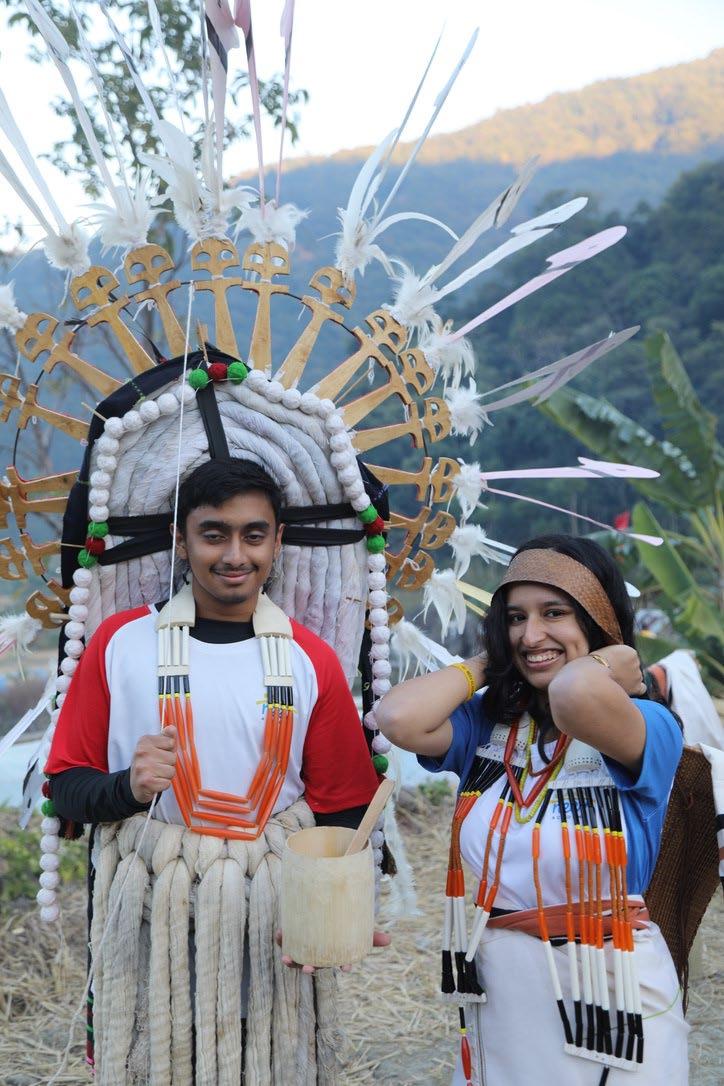
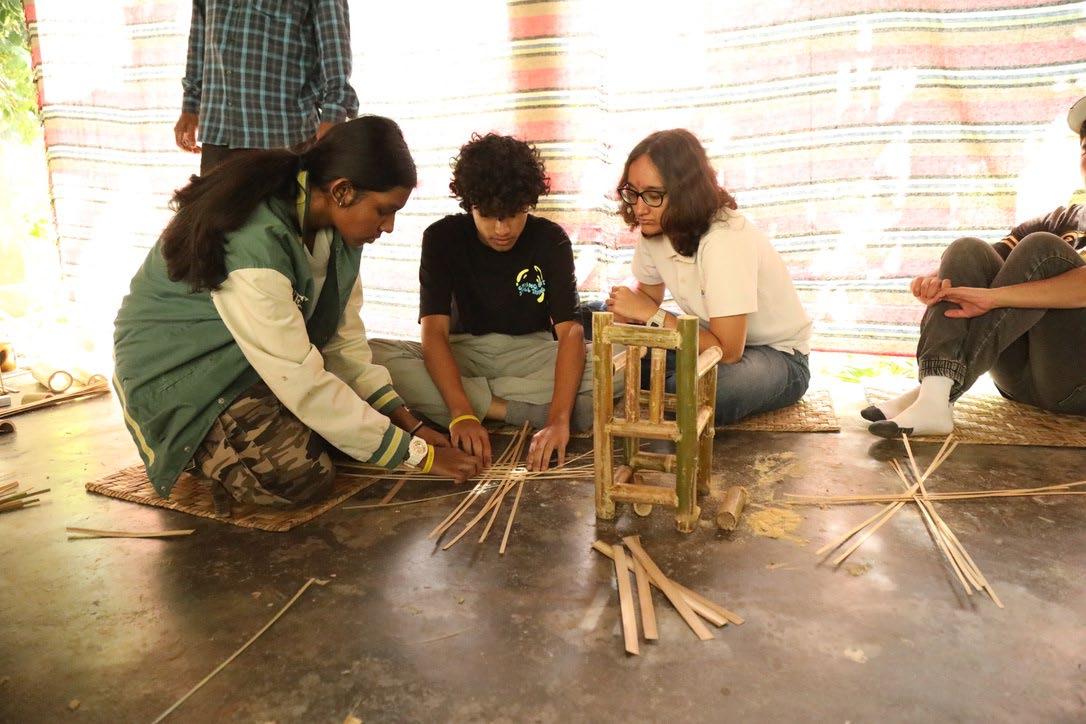
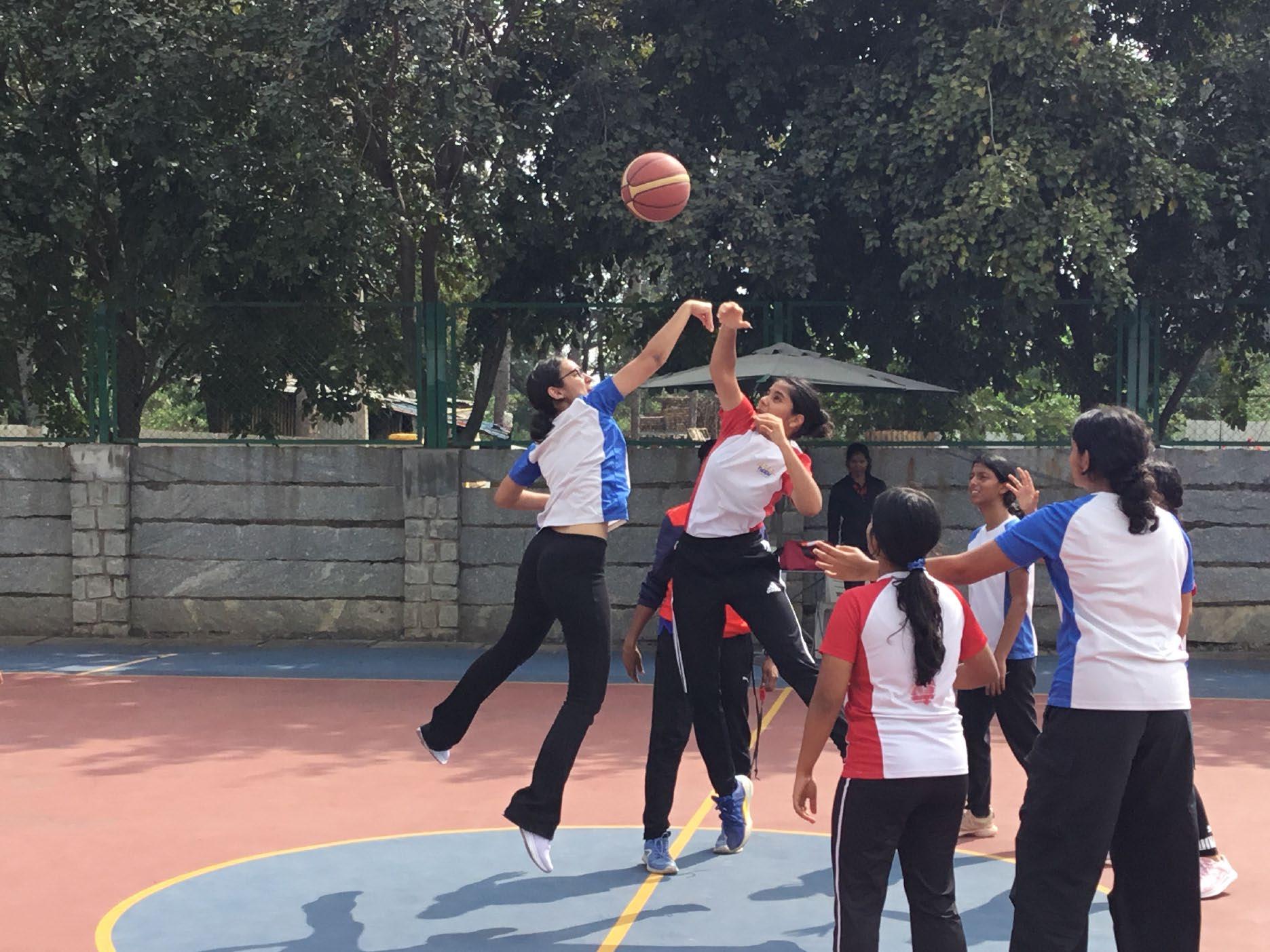
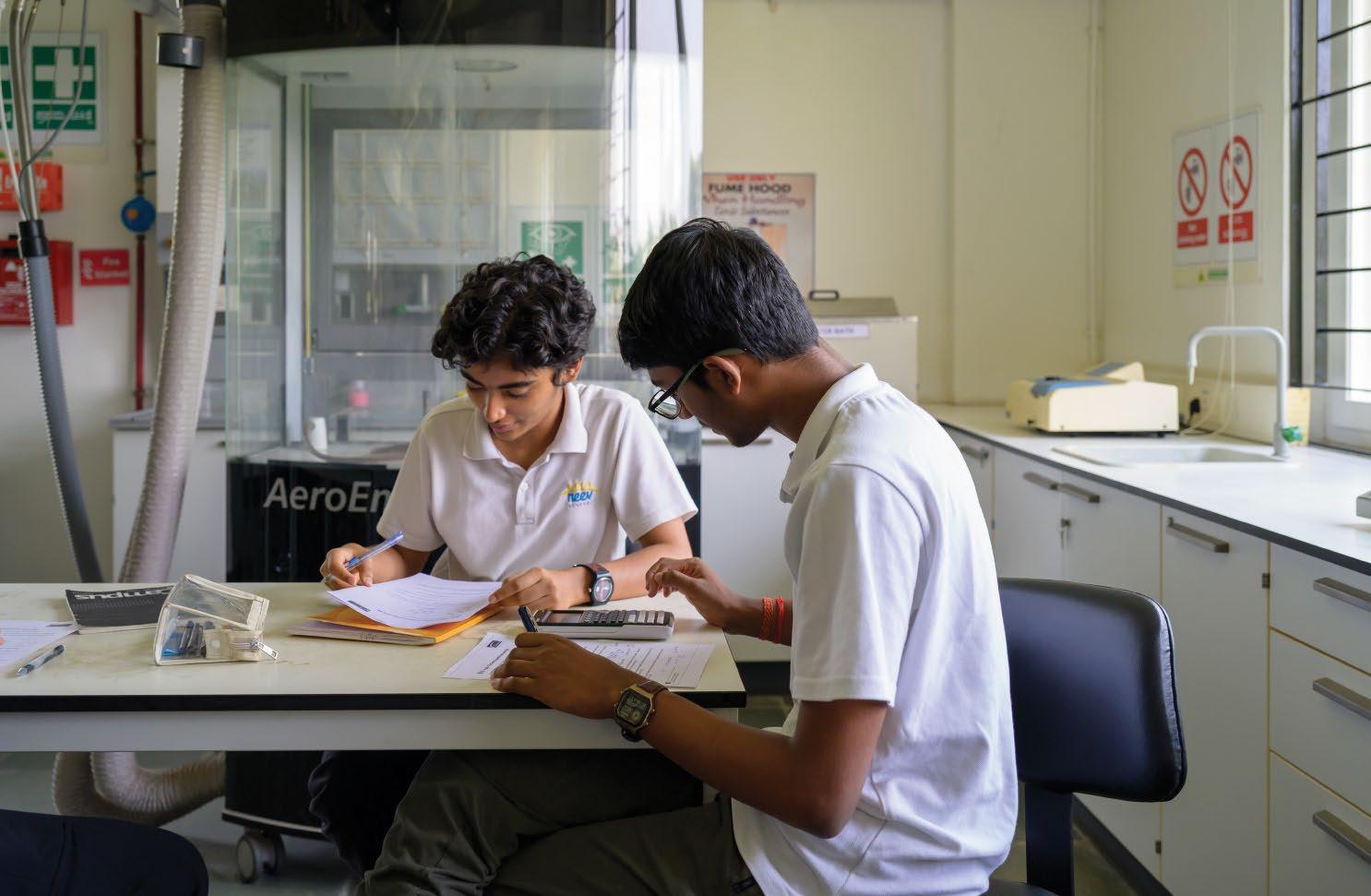
This course enables students to satisfy the requirements of both subjects groups simultaneously while studying one course. ESS is firmly grounded in both a scientific exploration of environmental systems in their structure and function, and in the exploration of cultural, economic, ethical, political and social interactions of societies with the environment. The interdisciplinary nature of the DP course requires a broad skill set from students, including the ability to perform research and investigations, participation in philosophical discussion and problem-solving. The course requires a systems approach to environmental understanding and promotes holistic thinking about environmental issues. Teachers explicitly teach thinking and research skills such as comprehension, text analysis, knowledge transfer and use of primary sources. They encourage students to develop solutions at the personal, community and global levels.
Syllabus content
Topic 1. Foundation
1.1. Perspectives
1.2. Systems
1.3. Sustainability
Topic 2. Ecology
Topic 3. Biodiversity and conservation
Topic 4. Water
Topic 5. Land
Topic 6. Atmosphere and climate change
Topic 7. Natural resources
Topic 8. Human populations and urban systems
Higher Level (HL) lens
HL.a Enviromental law
HL.b Enviromental and ecological economics
HL.c Enviromental ethics
Individual Investigation-
Written Report (between 1500-3000 words):
10 hours, 25% weighting (SL)
10 hours, 20% weighting (HL)
SL
Paper 1: Case study: 60 mintues, 25% weighting
Paper 2- Short answers and structured essays: 120 minutes, 50% weighting
HL
Paper 1: Case study: 120 mintues, 30% weighting
Paper 2- Short answers and structured essays: 150 minutes, 50% weighting
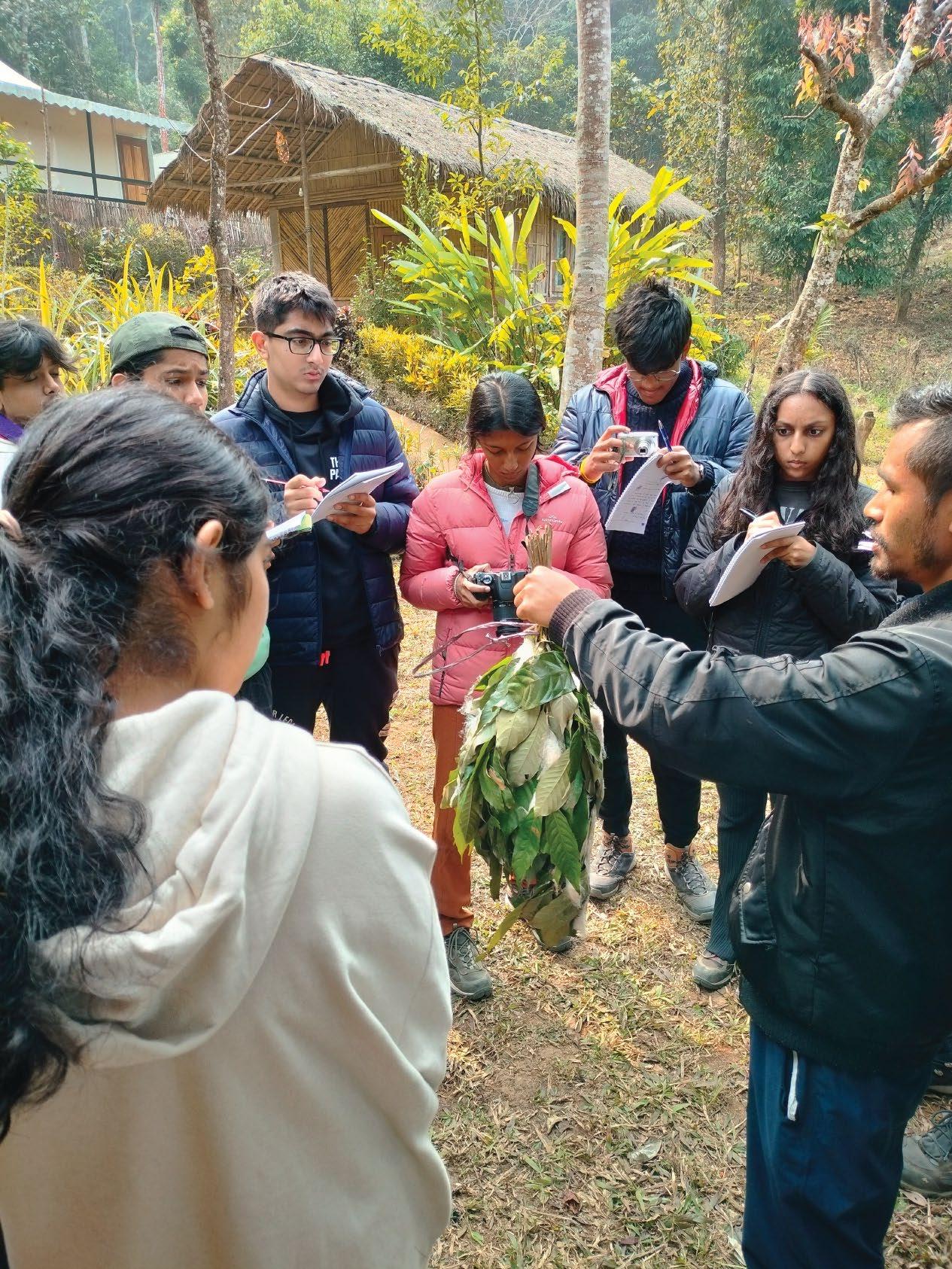
Topic 1: Numbers and algebra
Topic 2: Functions
Topic 3: Geometry and Trigonometry
Topic 4:Statistics and Probability
Topic 5: Calculus
Development of investigational, problem-solving and modelling skills and the exploration of an area of mathematics
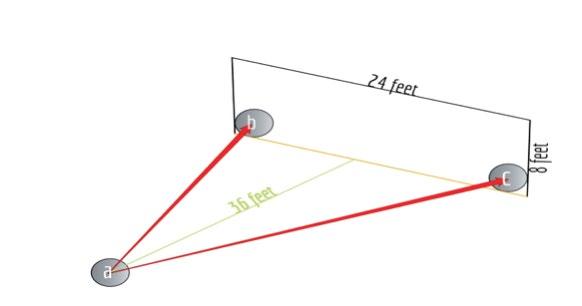
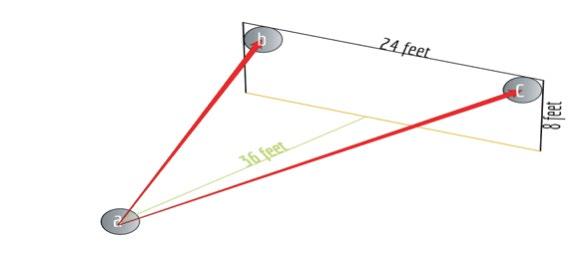
TYPE OF ASSESSMENT
EXTERNAL
Paper 1
Paper 2 FORMAT OF ASSESSMENT
No technology allowed.
Section A: compulsory short‑response questions based on the syllabus.
Section B: compulsory extended‑ response questions based on the syllabus.
Technology allowed.
Section A: compulsory short‑response questions based on the syllabus.
Section B: compulsory extended‑ response questions based on the syllabus.
Paper 3
Technology allowed.
Two compulsory extended‑response problem‑solving questions.
INTERNAL
EXPLORATION
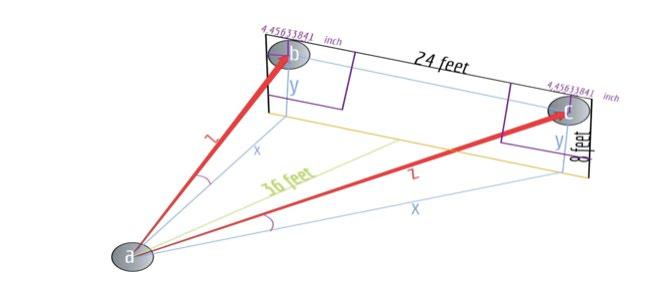
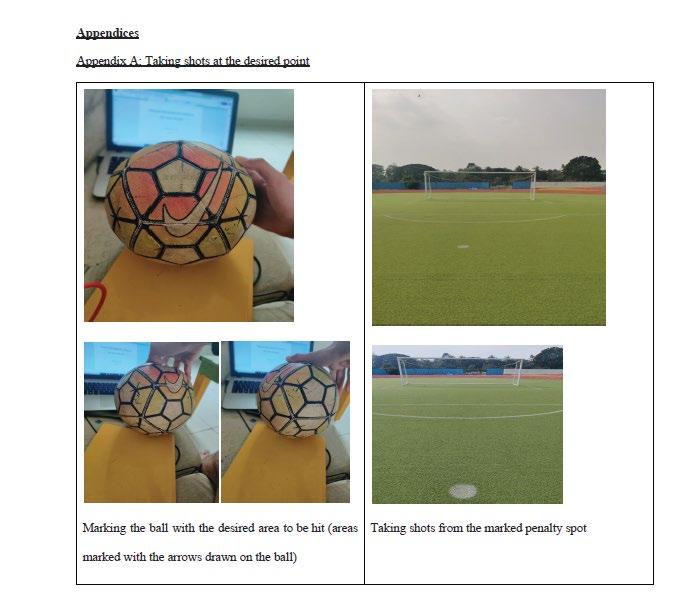

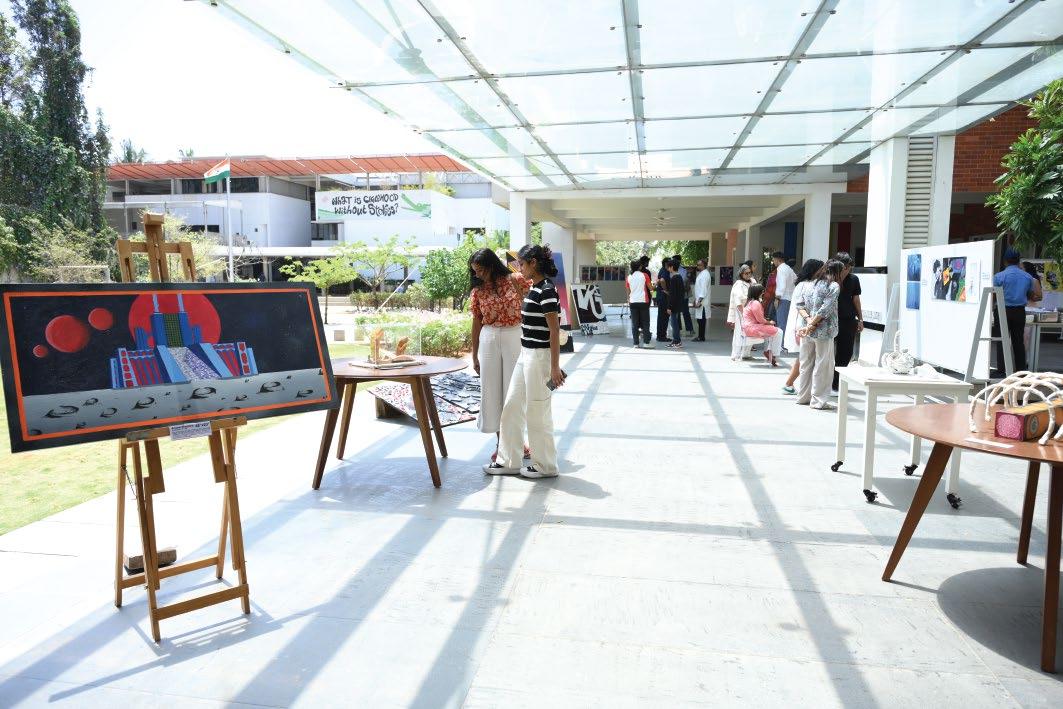
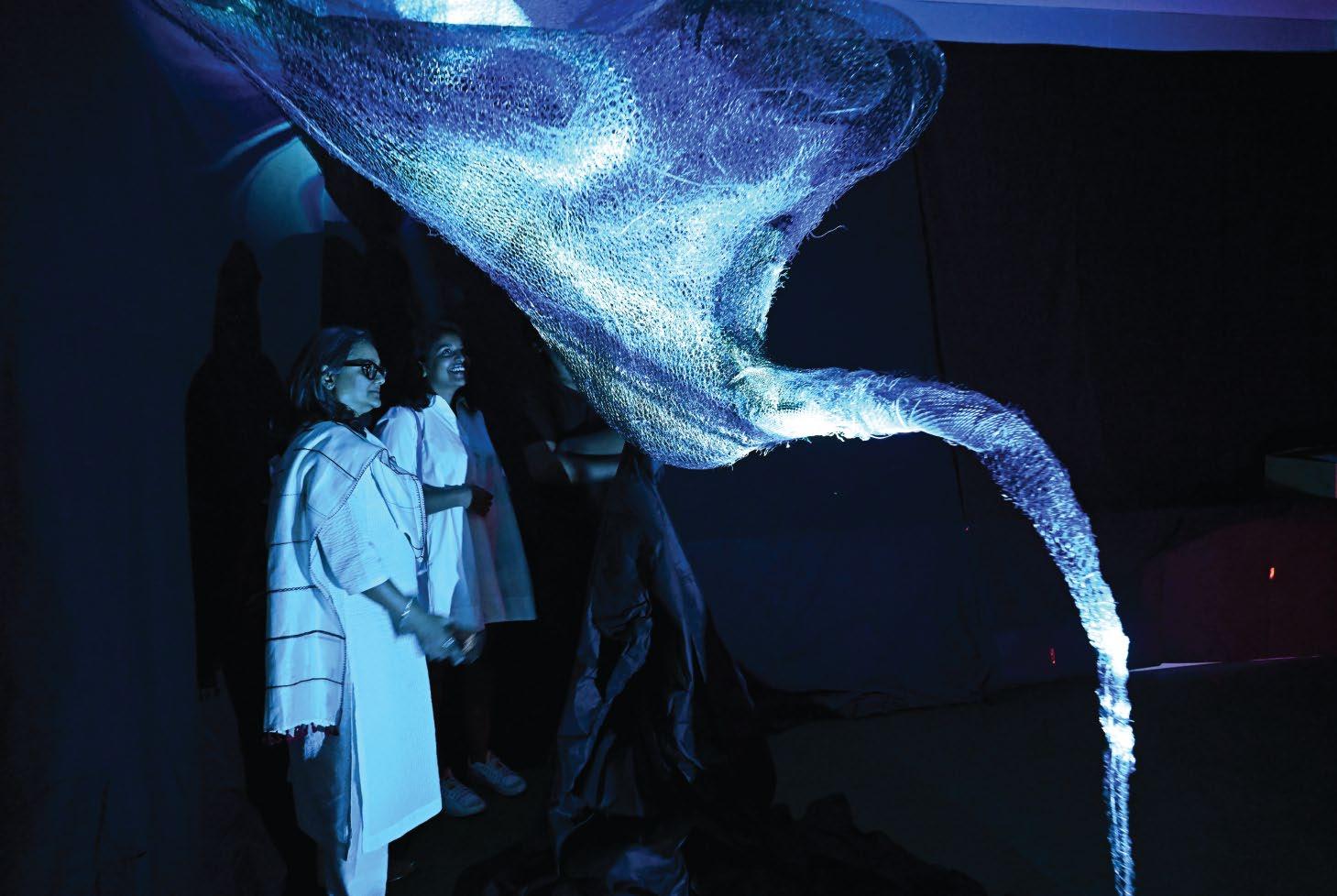
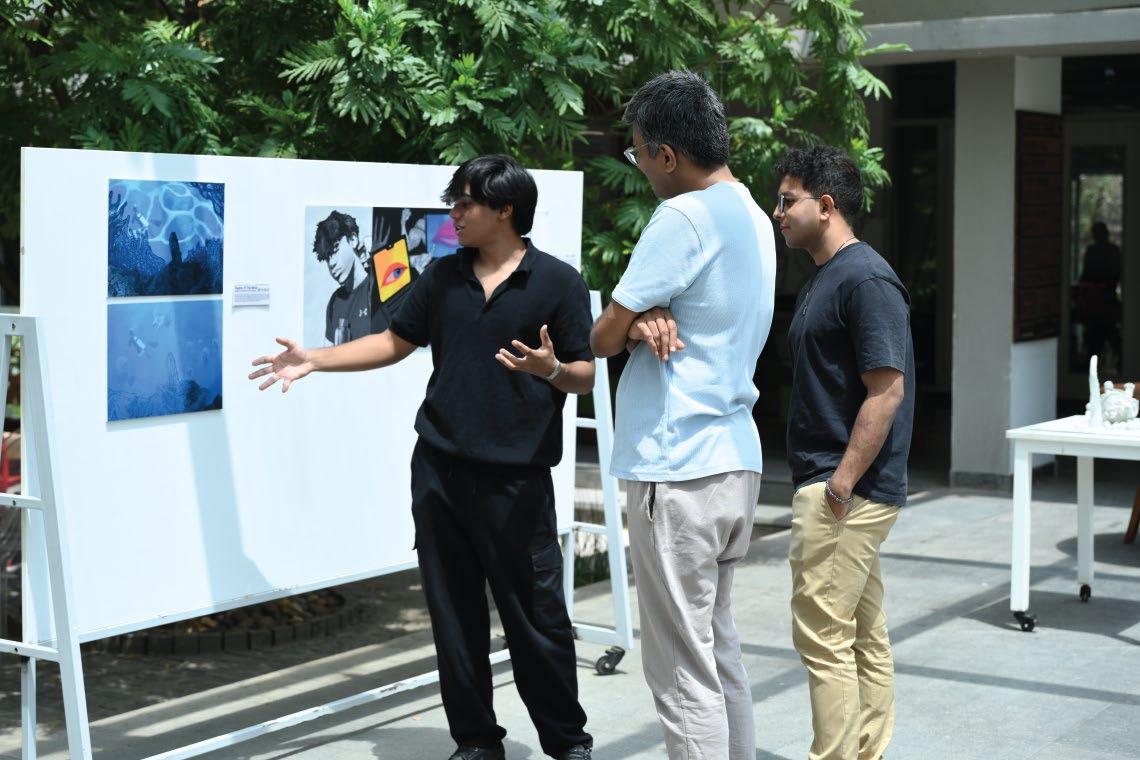
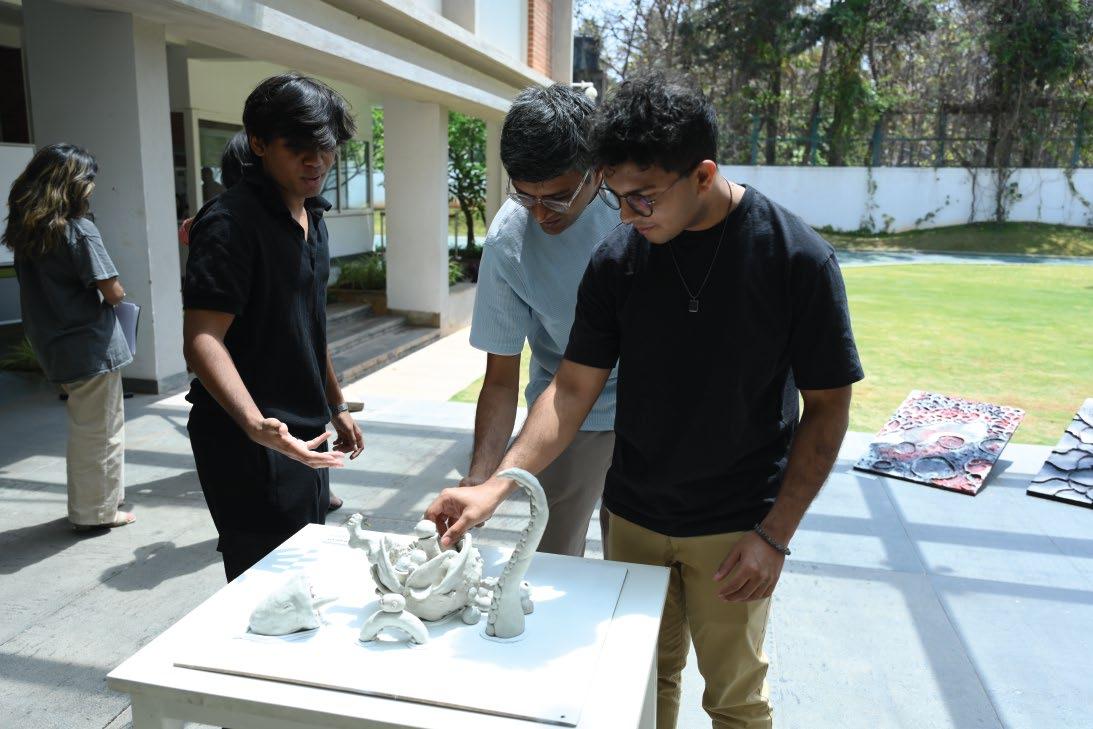
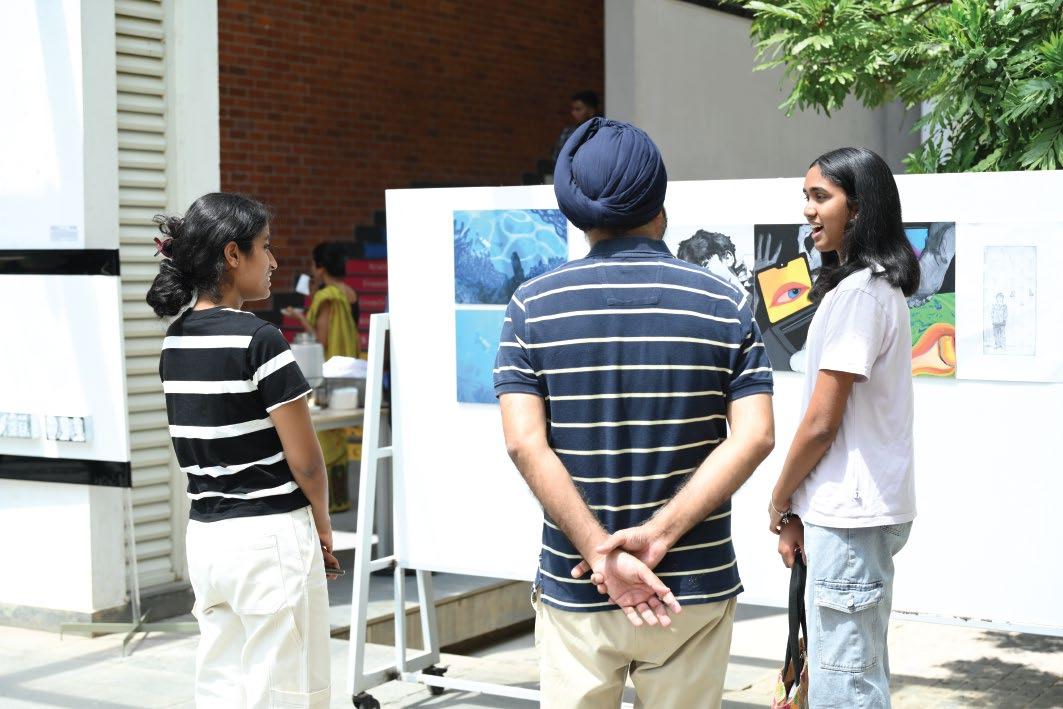
VISUAL ARTS IN CONTEXT
COMMUNICATING VISUAL ARTS
VISUAL ARTS METHODS
The research process
The research process involves the following steps, though the order may unfold differently for different students.
• Choose a broad topic then refine and focus it.
• Decide the appropriate pathway: interdisciplinary or subject-focused.
• Choose the approved DP subject(s).
• Undertake some preparatory reading.
• Form a well-focused research question.
• Plan the research and writing process.
• Plan a structure for the essay. This may change as the research develops.
• Carry out the research.
Writing and formal presentation
The required elements of the final submission are as follows.
• Title page
• Contents page
• Introduction
• Body of the essay
• Conclusion
• References and bibliography
The upper limit of 4,000 words includes the introduction, body, conclusion and any quotations. Reflection process
Reflection is the process by which students recapture their experience and think about its impact on them as learners. This includes how they envisage applying what they have learned to other circumstances, including future studies, career, or life in general. To assist students with this, there are three mandatory, formal reflection sessions with the supervisor.
The reflection sessions also give students the opportunity to:
• Reflect on their engagement with the research process
• Consider the effectiveness of their choices
• Re - examine their ideas and decide whether changes are needed.
The final reflection session is the viva voce, a short interview (10-15 minutes) between the student and the supervisor. The viva voce serves to check academic integrity, reflect on successes and difficulties, and think about what has been learned. Reflective thinking is recorded as a 500-word reflective statement. The student writes the statement at the end of the extended essay process and includes it on the Reflection and progress form (RPF). The form also notes the student’s attendance at each reflection session.
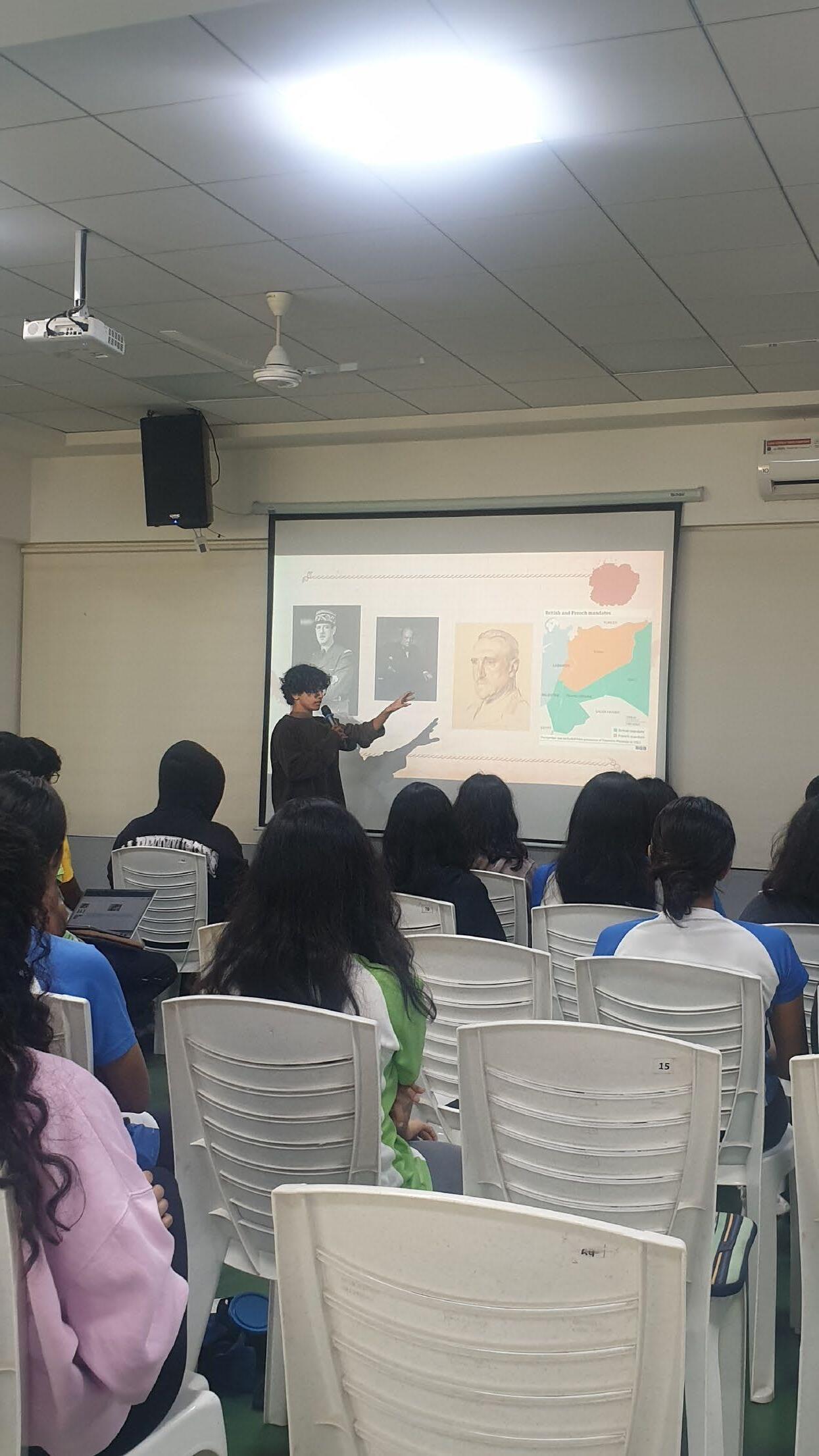
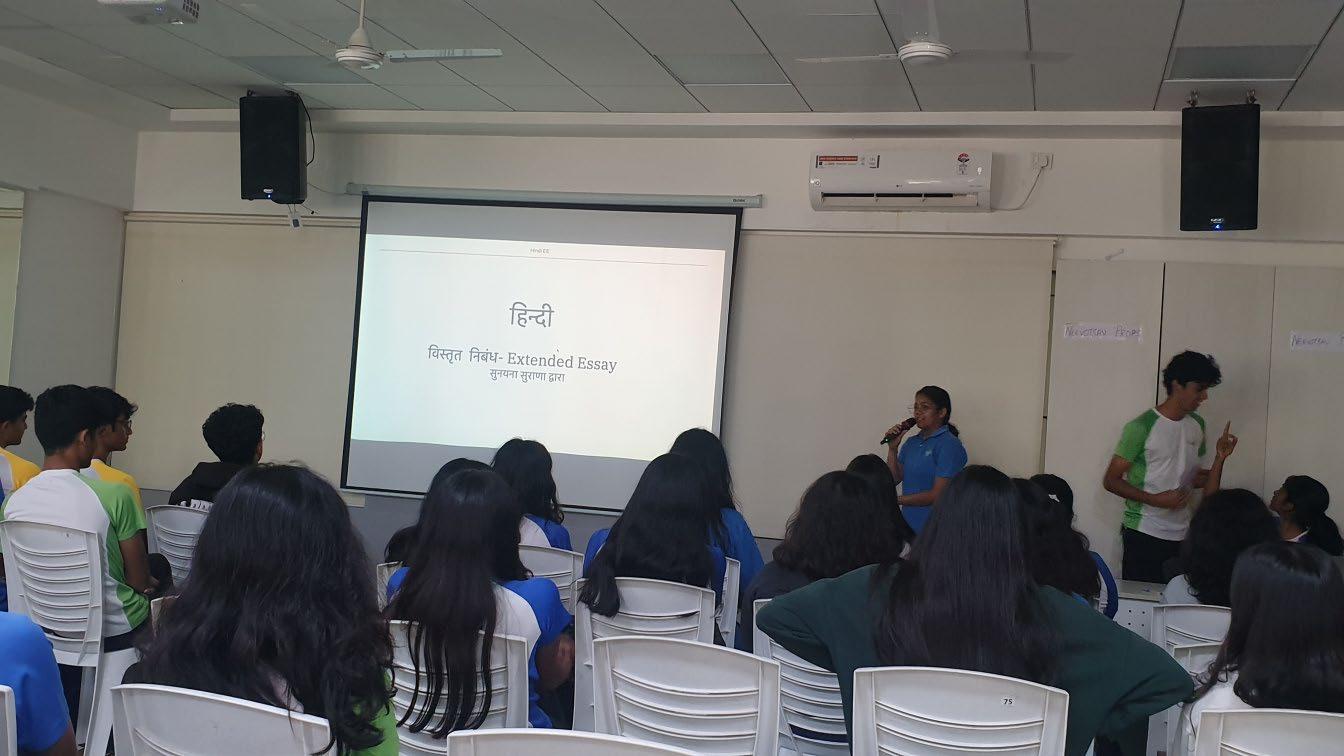
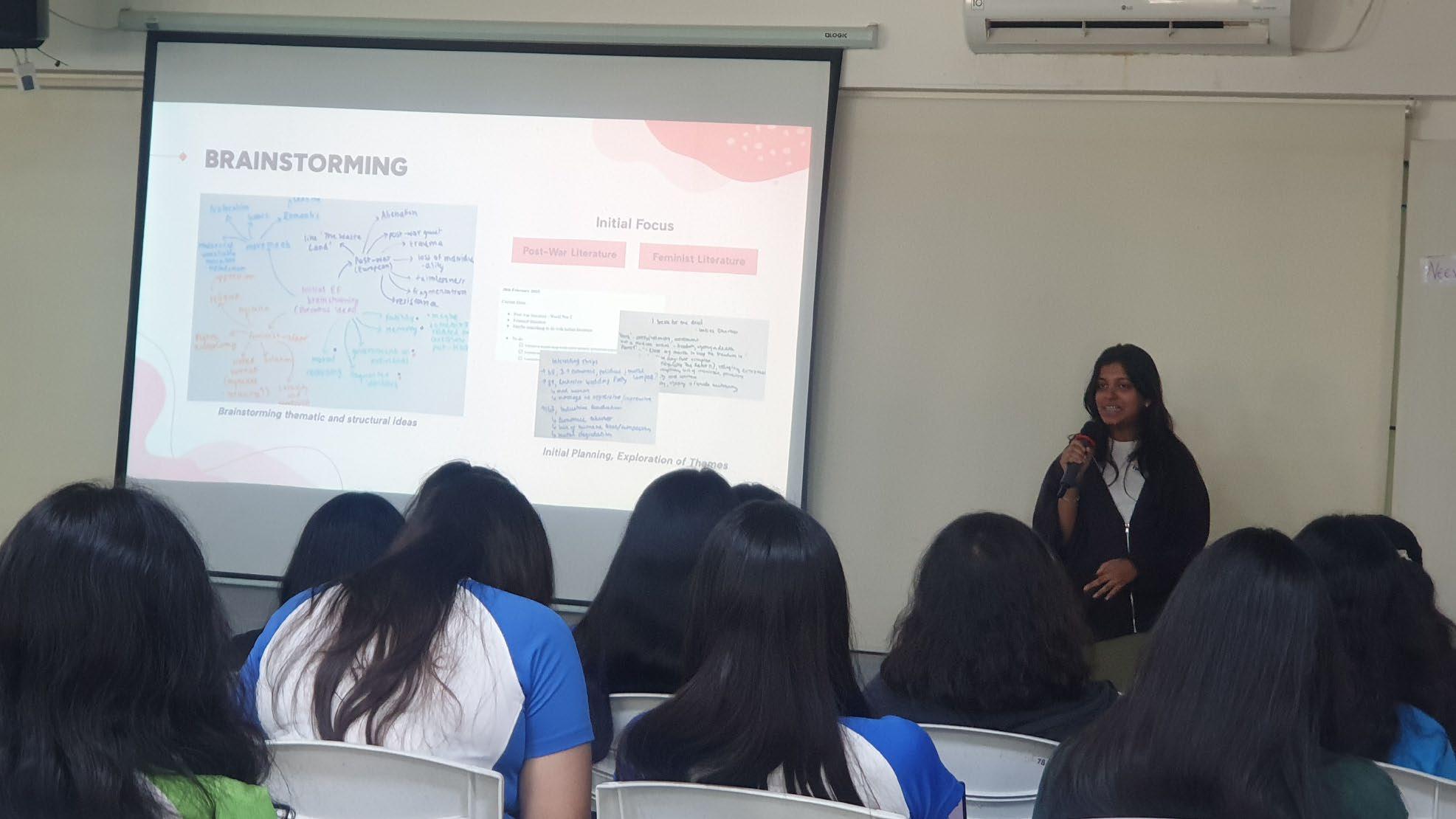

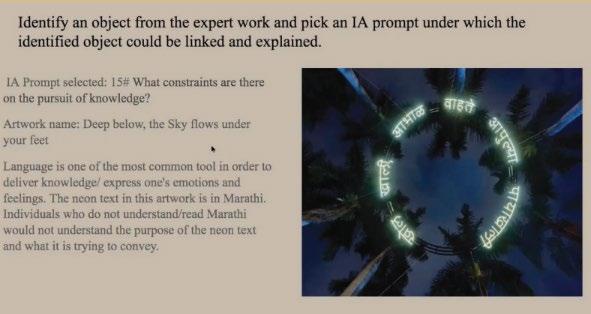

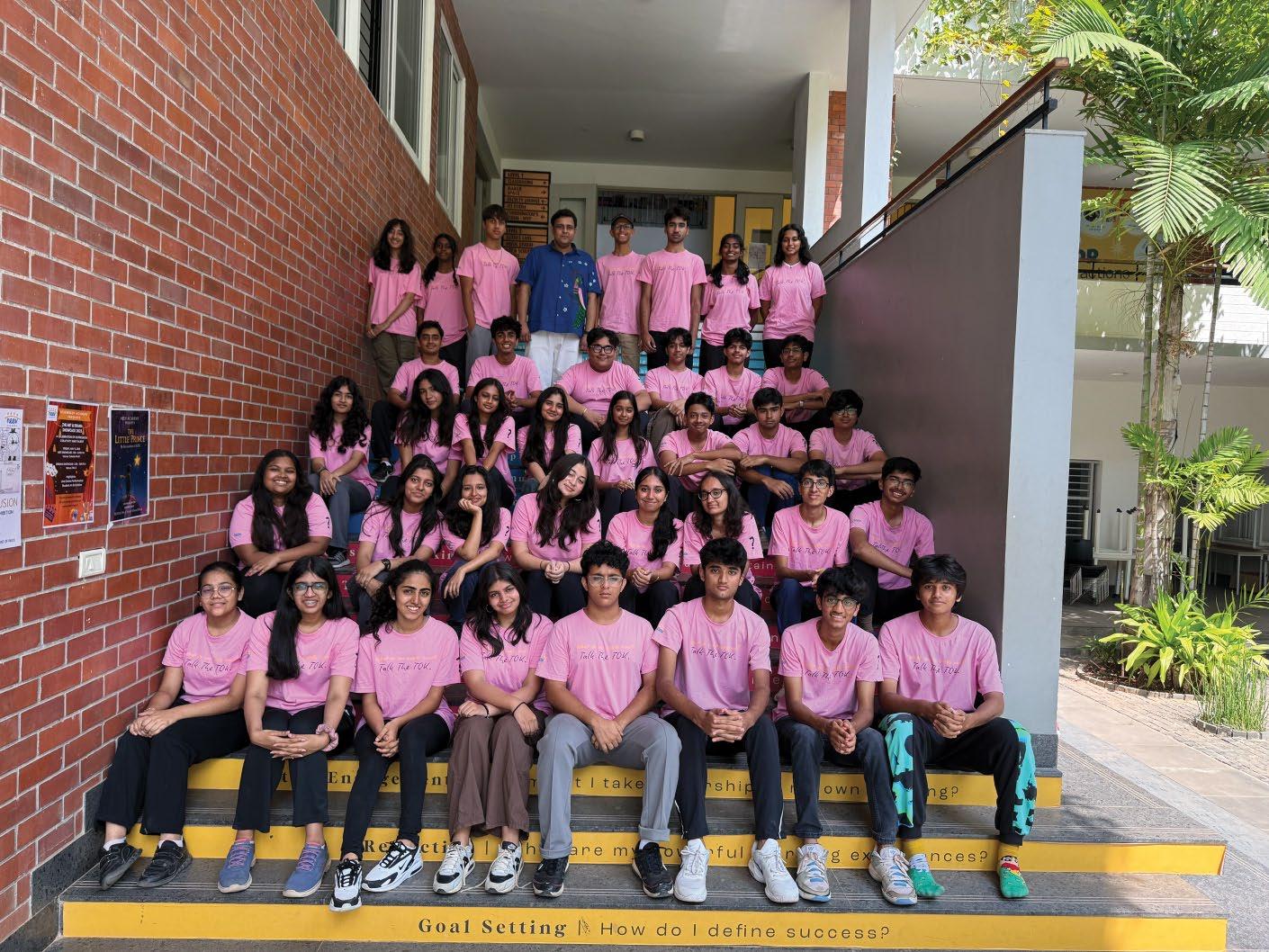
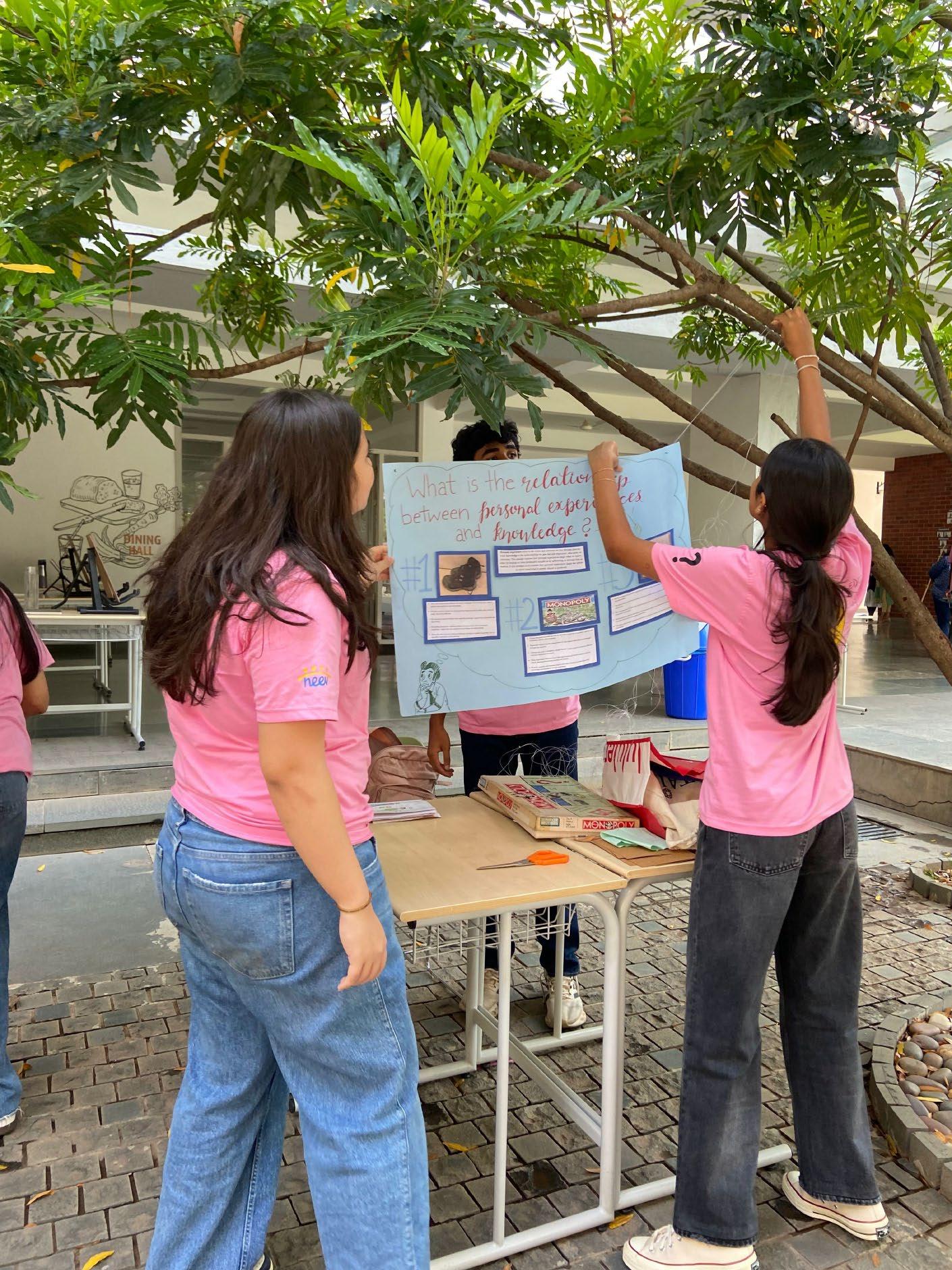
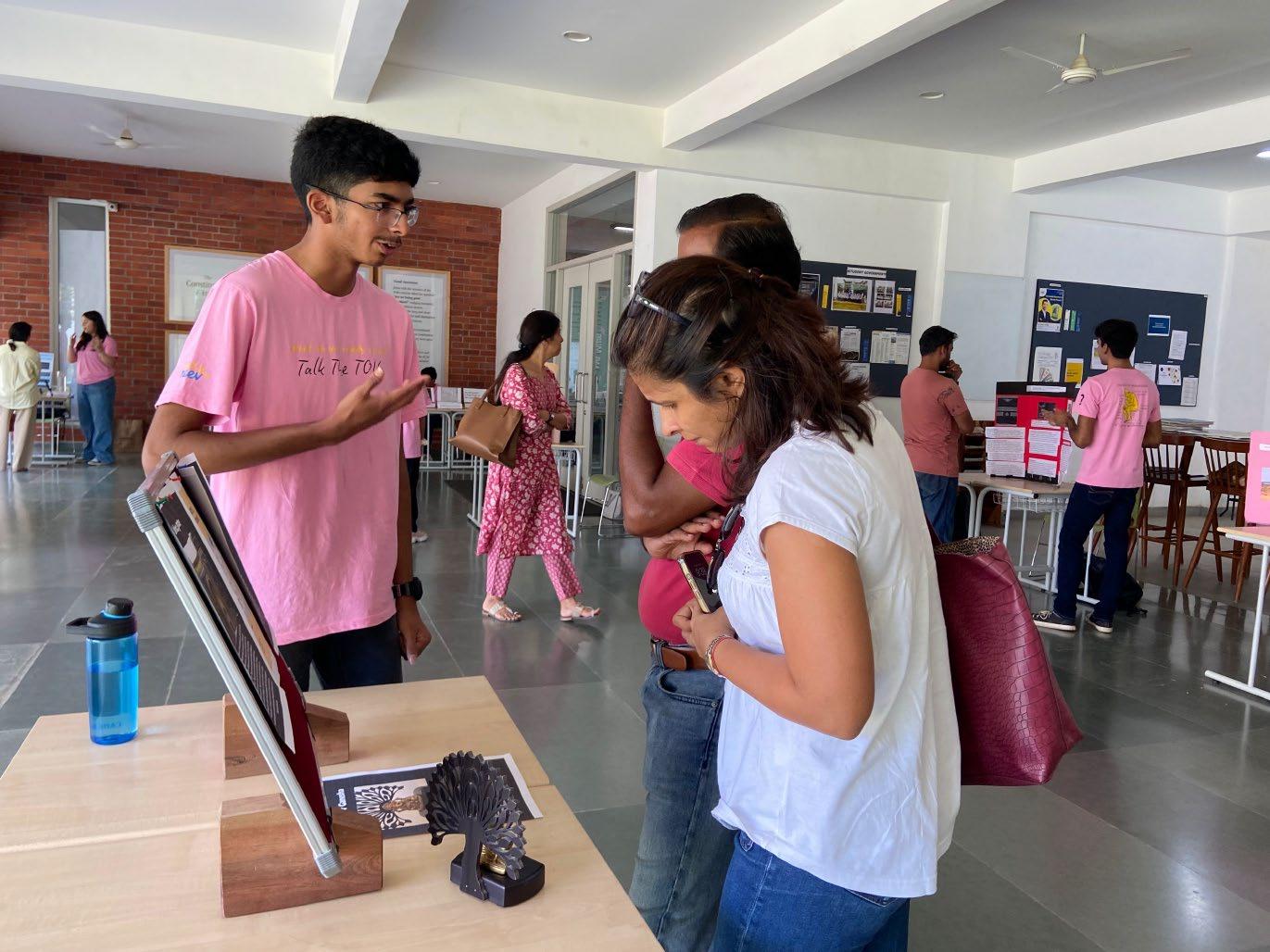

Neev has a successful Tok course with several students obtaining the highest grade. In May 2023, the resulta from TOK ensured that the cohort finished the DP with an average of 2.27 out of 3 baonus points. The course is formed on the basis of perspectives, and to this end the school creates opportunities for students to interact with experts within several areas of knowledge. Students demonstrate this exposure to multiple perspectives and their ability to think critically by working with various IB prompts for their exhibition and essay that covered such elements as value, power, Interpretation, and ethical considerations in the creation and sharing of knowledge
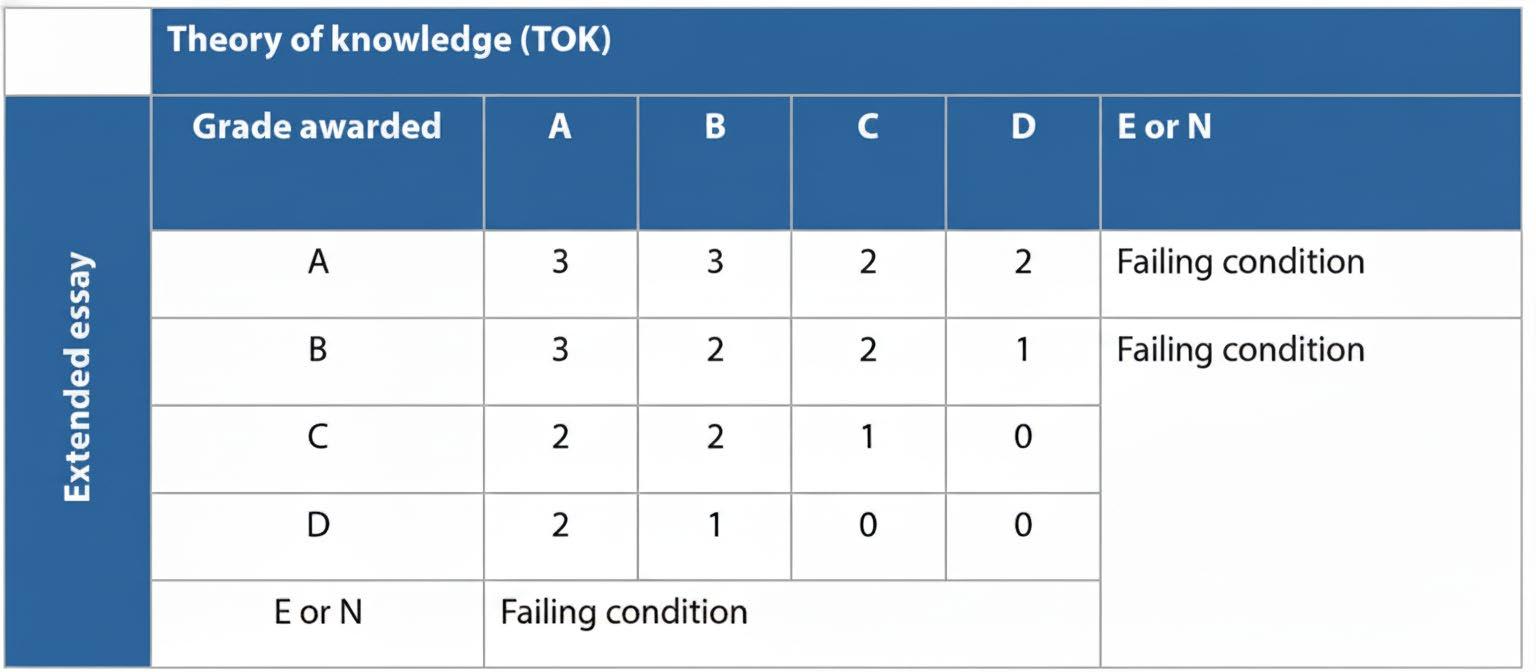
The Extended Essay is an independent piece of research, culminating with a 4,000-word paper The axtandad essay provides: practical preparation for undergraduate research. It offers an opportunity for students to investigate a topic of personal interest to them, which relates to one of the student's six DP subjects, or takes the interdisciplinary approach of a World Studies extended essay.
All three strands of CAS are equally important at Neev and are expected to be demonstrated across the two years of the DP. Creativity gives students the opportunity to take an idea and develop it into an original product; activity ensures that students develop a healthy lifestyle through physical exercise and exertion; service brings students together with the community around them in response to an authentic need. A few CAS projects created by Neev students often combine more than one CAS strand leading to engagement at several levels of personal and interpersonal leaming. A few of the "named' CAS projects are: Griseo helps teenagers cope with stress through webinars and artickes. The Joyful Peach curates positive news and aims to spread positivity in the community. Amarte Art while apart art sessions for people to destress. Susteniri sustainability education through workshops and expert talks. F&F help center video guides for teachers on Zoom, Google Drive & Windows 10. Sole Warriors Shodding migrant worker communities with recycled footwear. Macha's Bakery Bakes and sells coolves and cakes for migrant worker support many initiatives are unnamed but work towards education, COVID care fundraising and more. Some are award winning individual projects others are collaborations, often across grades.
Theory of Knowledge and the extended essay are assessed, while CAS is not formally assessed but it is necessary to meet all requirements for the award of the diploma. The grade obtained in ToK (A-E) and in the EE (A-E) combine to give each student a maximum of three points. These points are referred to as core points
Six courses, 3 HL, 3SL EssayExtended TheoryofKnowledge
Exams 75 to 80%
- Papers 1, 2, 3 SL - Papers 1, 2
Coursework 20 to 25%
• 8 coursework components at a minimum
• NOT Assessed: Creativity, Activity, Service (a requirement to complete the Diploma Programme)
Summative Assessment 1 (Sep)
Summative Assessment 2 (Nov)
• Every week, teachers will conduct in-class formative assessments (either written or non-written) to gather ongoing evidence of student learning.
• Students will engage in a Skill Based Research project aligned with the skill expectations of the IB Internal Assessment.
The exact dates for all summative assessments will be included in the Academic Coursework Timeline Calendar, which will be shared with students and parents.
Summative Assessment 3 (Feb)
End of Year Examination (Apr)
• Every week, teachers will conduct in-class formative assessments (either written or non-written) to gather ongoing evidence of student learning.
• Students will engage in a Mock Research project aligned with the skill expectations of the IB Internal Assessment.
The exact dates for all summative assessments will be included in the Academic Coursework Timeline Calendar, which will be shared with students and parents.
Summative Assessment 5 (Sep)
Summative Assessment 6 (Nov)
• Every week, teachers will conduct in-class formative assessments (either written or non-written) to gather ongoing evidence of student learning.
• Students will submit their Draft IA, which will be graded according to its actual weightage.
The exact dates for all summative assessments will be included in the Academic Coursework Timeline Calendar, which will be shared with students and parents.
Mock Examination (Feb)
Final IBDP Examination (Apr - May)
• Every week, teachers will conduct in-class formative assessments (either written or non-written) to gather ongoing evidence of student learning.
• Students will submit their Final IA, which will be graded according to its actual weightage.
The exact dates for all summative assessments will be included in the Academic Coursework Timeline Calendar, which will be shared with students and parents.
Grade boundaries are determined in each term based on the body of work that students have produced against the IB grade descriptors Published in December 2017 and updated in February 2025. Teachers also reference the grade boundaries declared by the IB in previous exarnination sessions.
A student's predicted grades for each subject that are required for both university applications and by the IB are determined based on the authentic work that a student has produced under appropriate supervision or invigilation against the grade descriptors declared by the IB in December 2017.
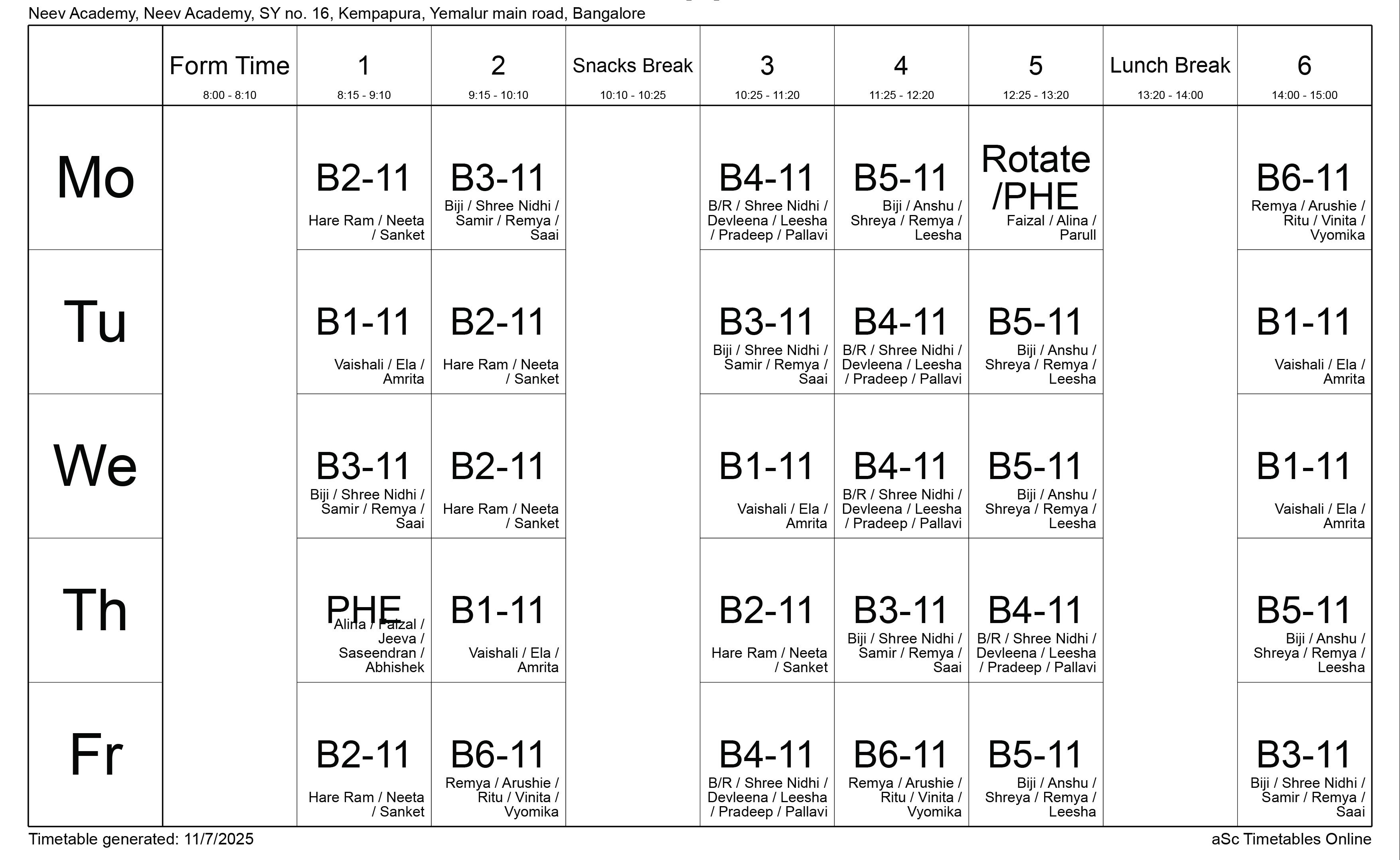
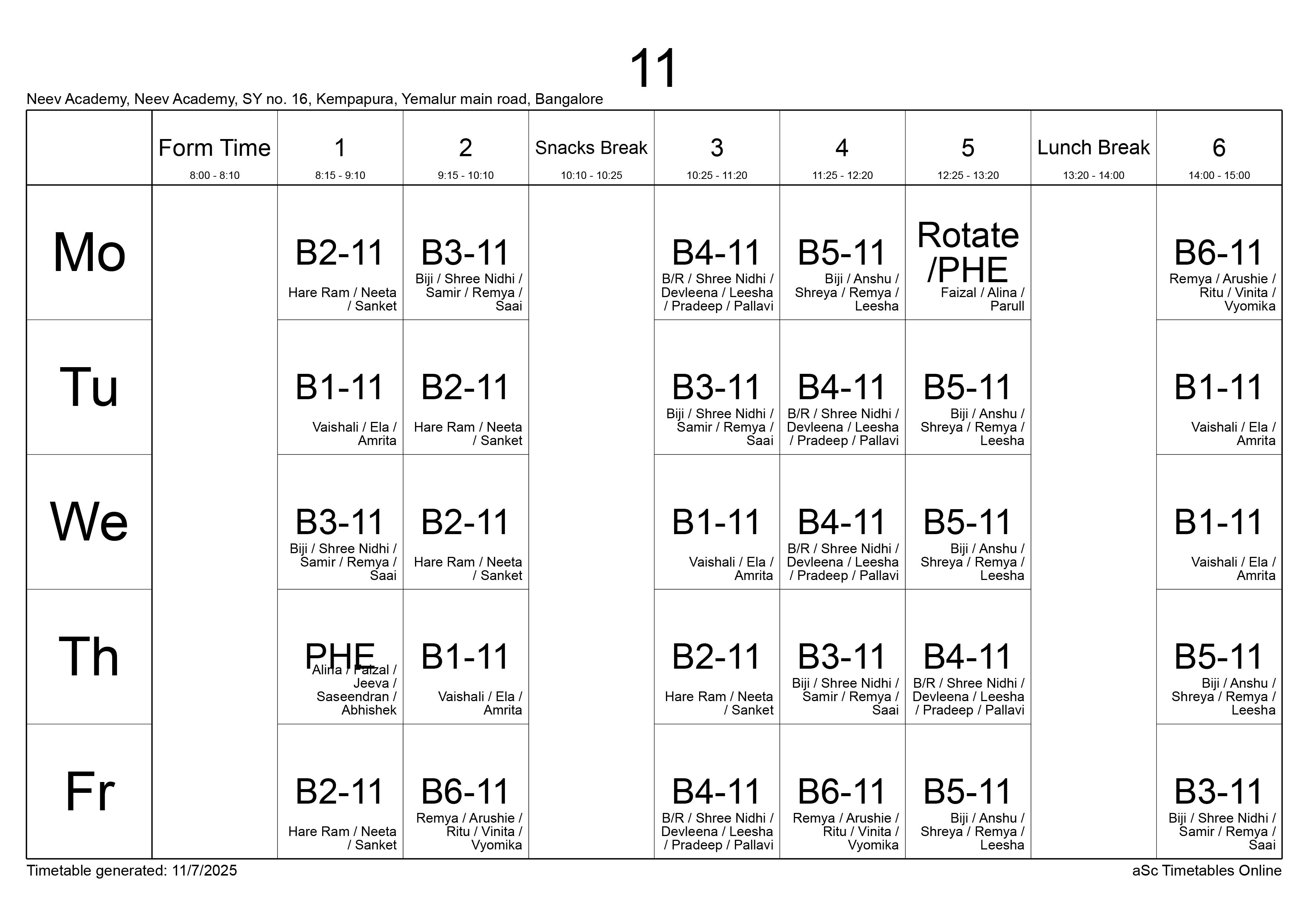
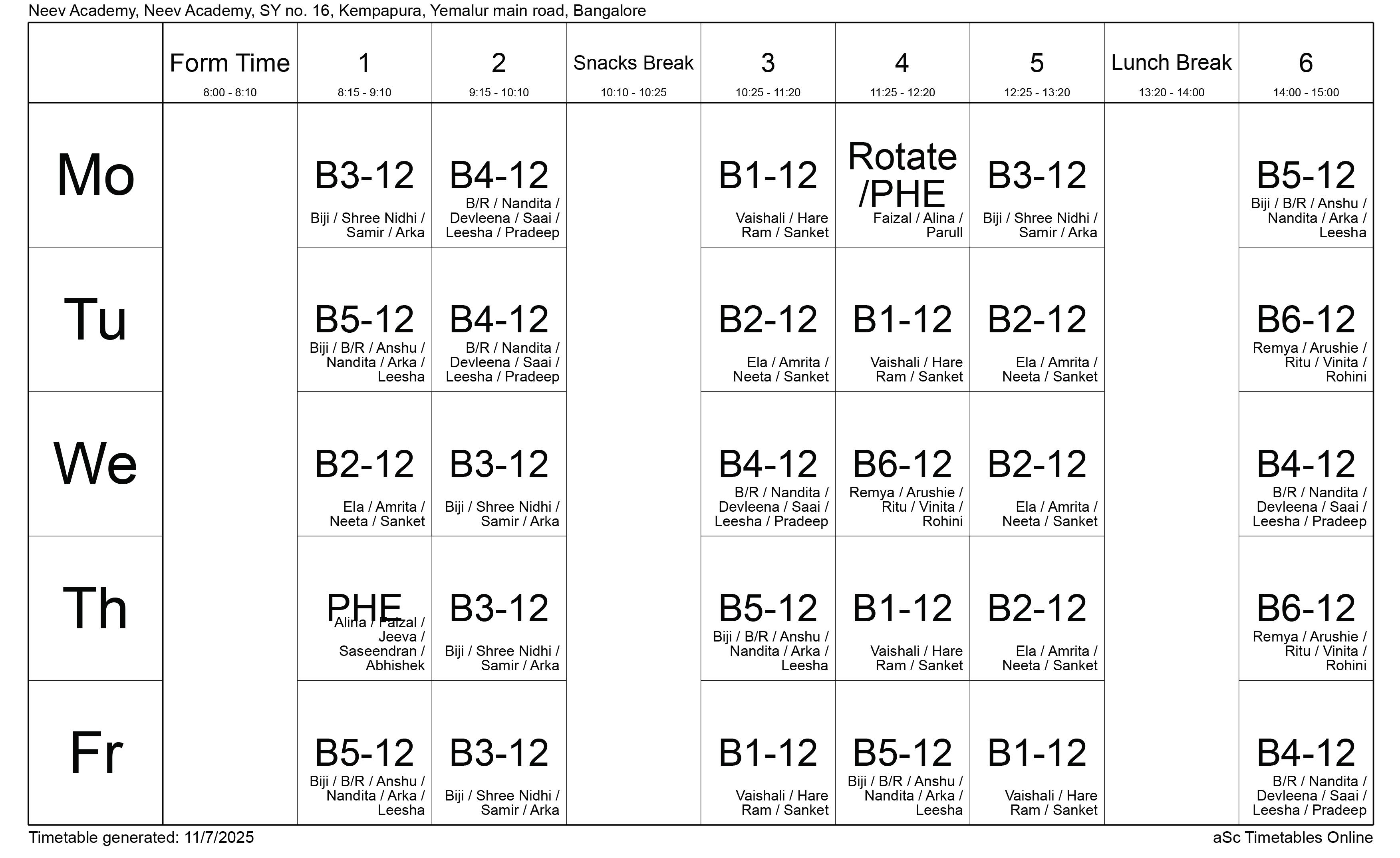


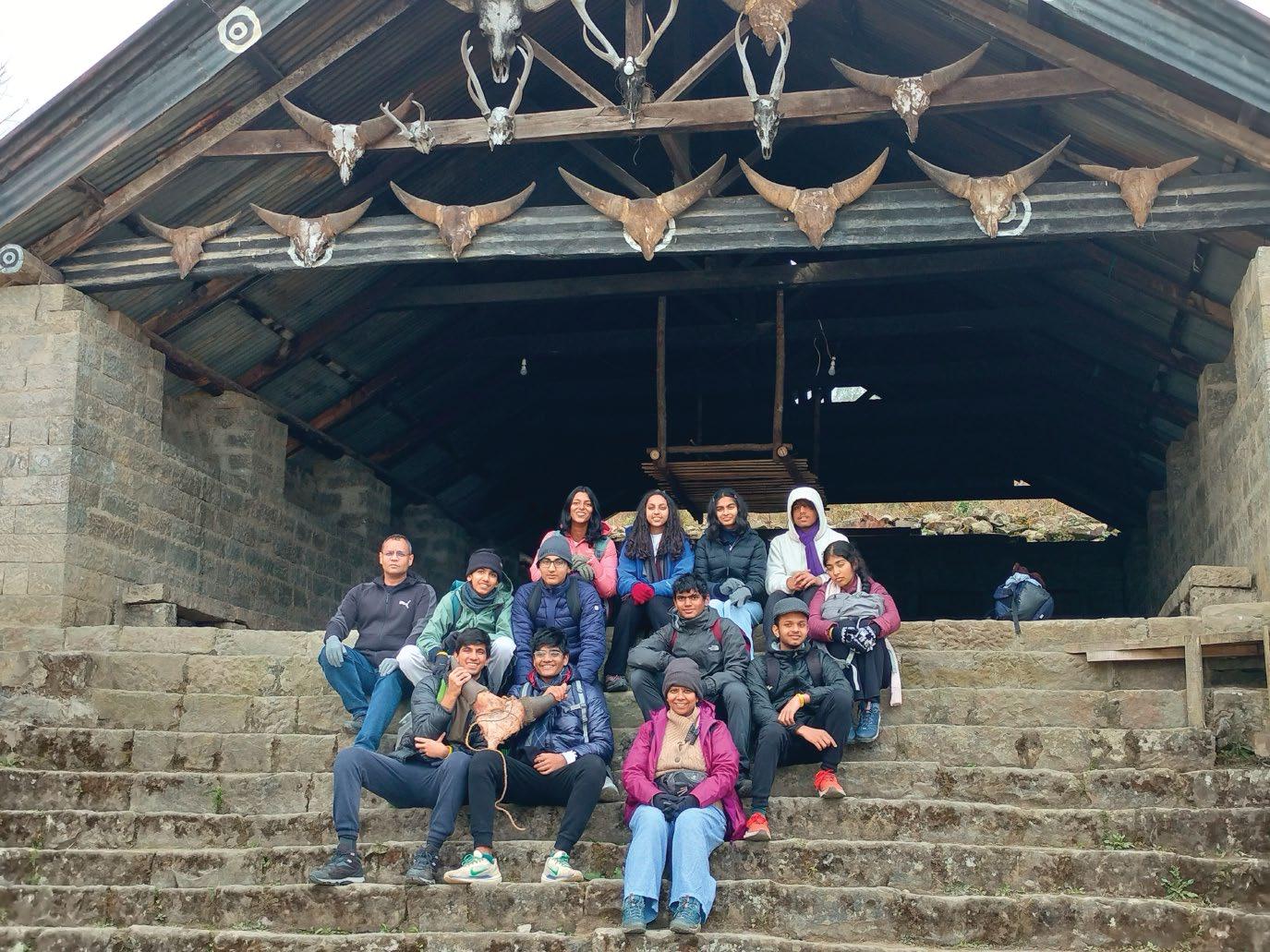
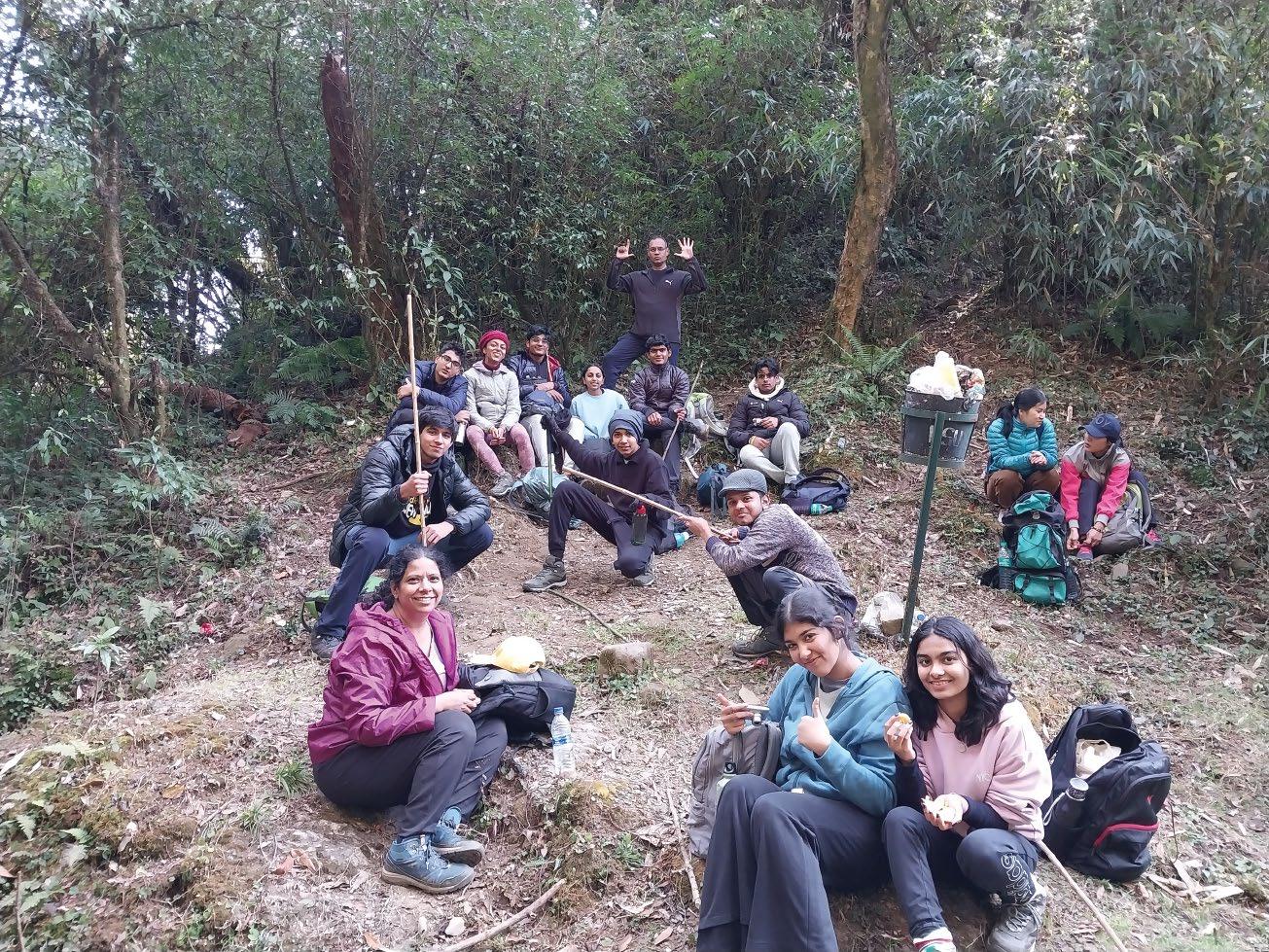
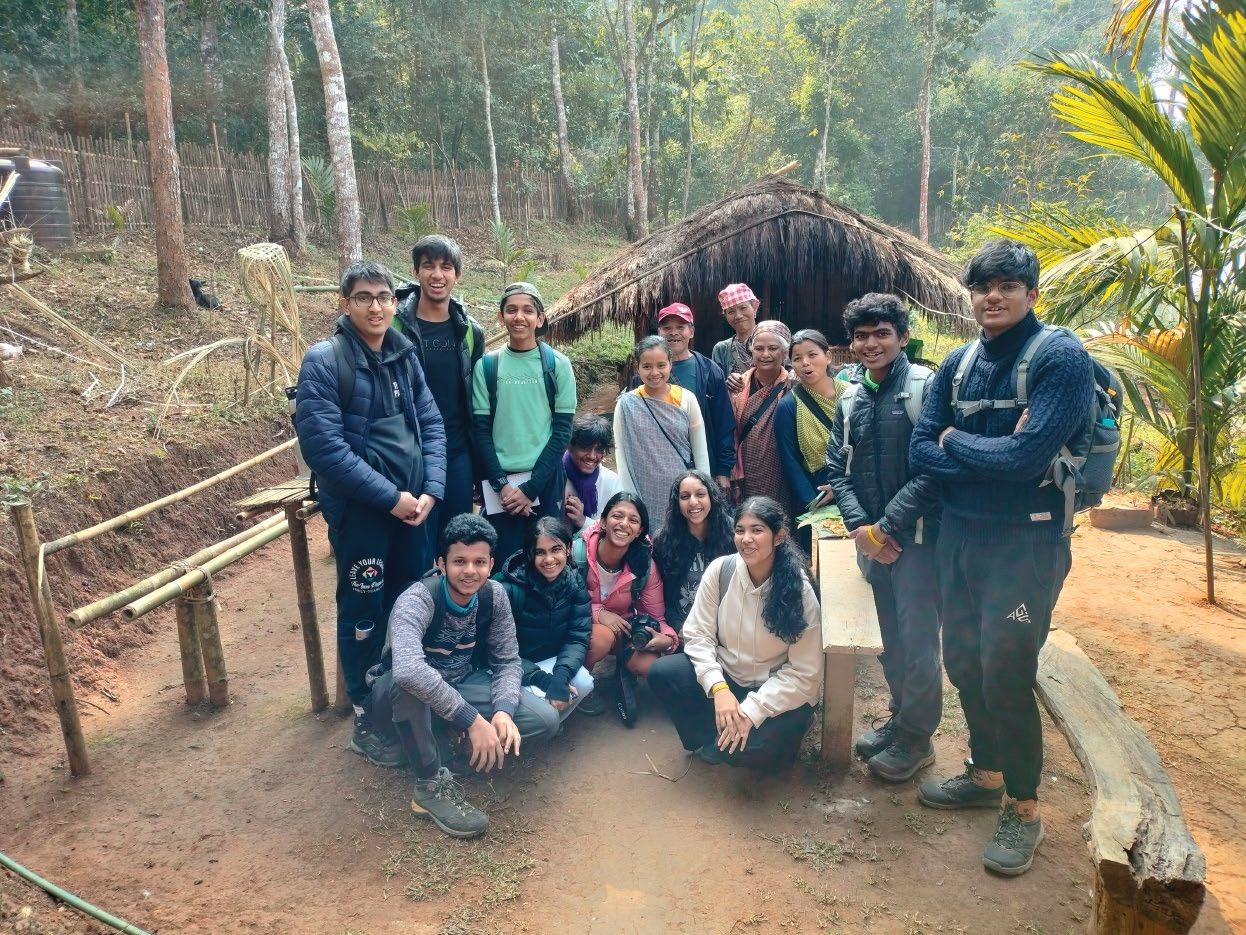





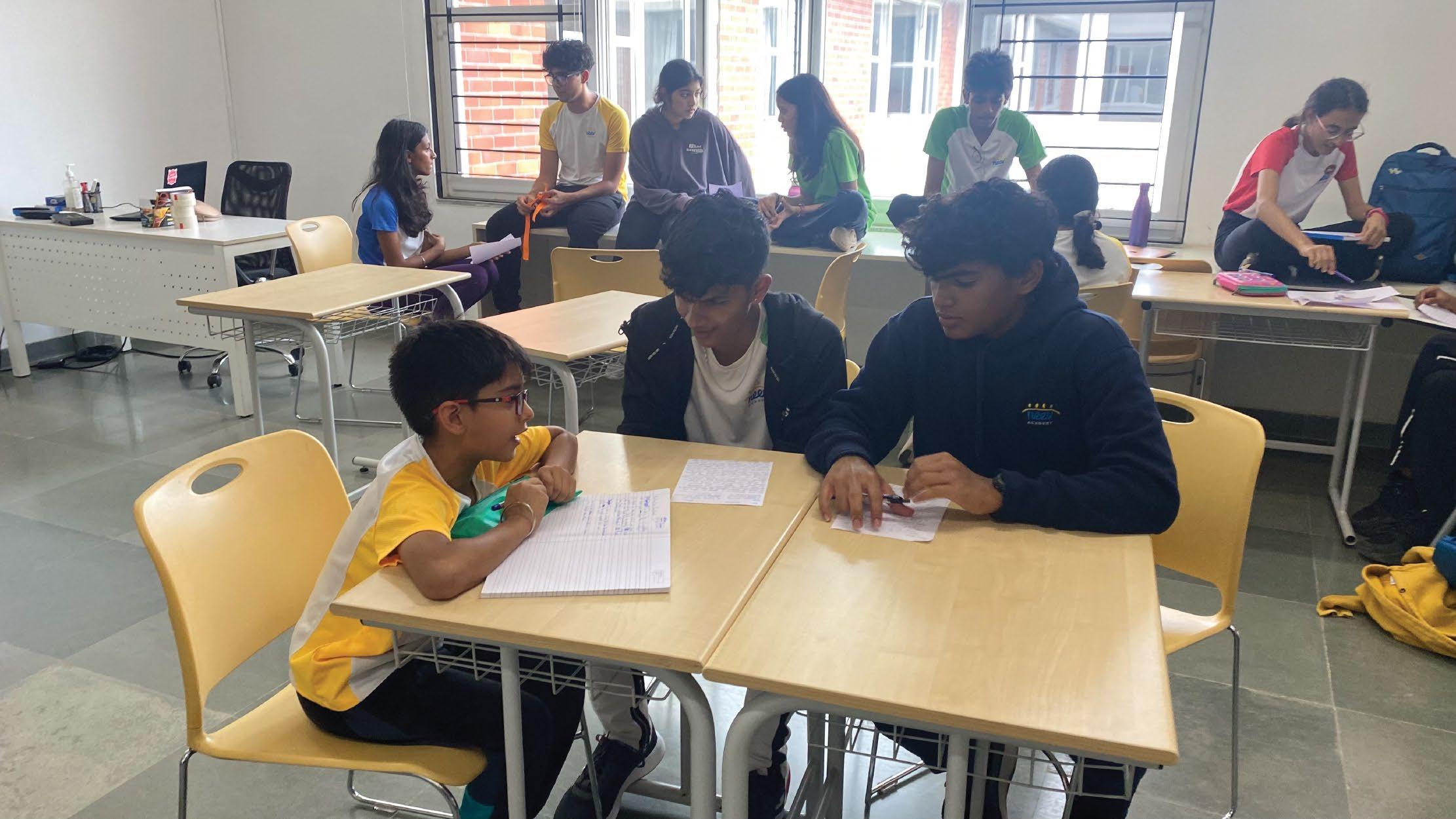
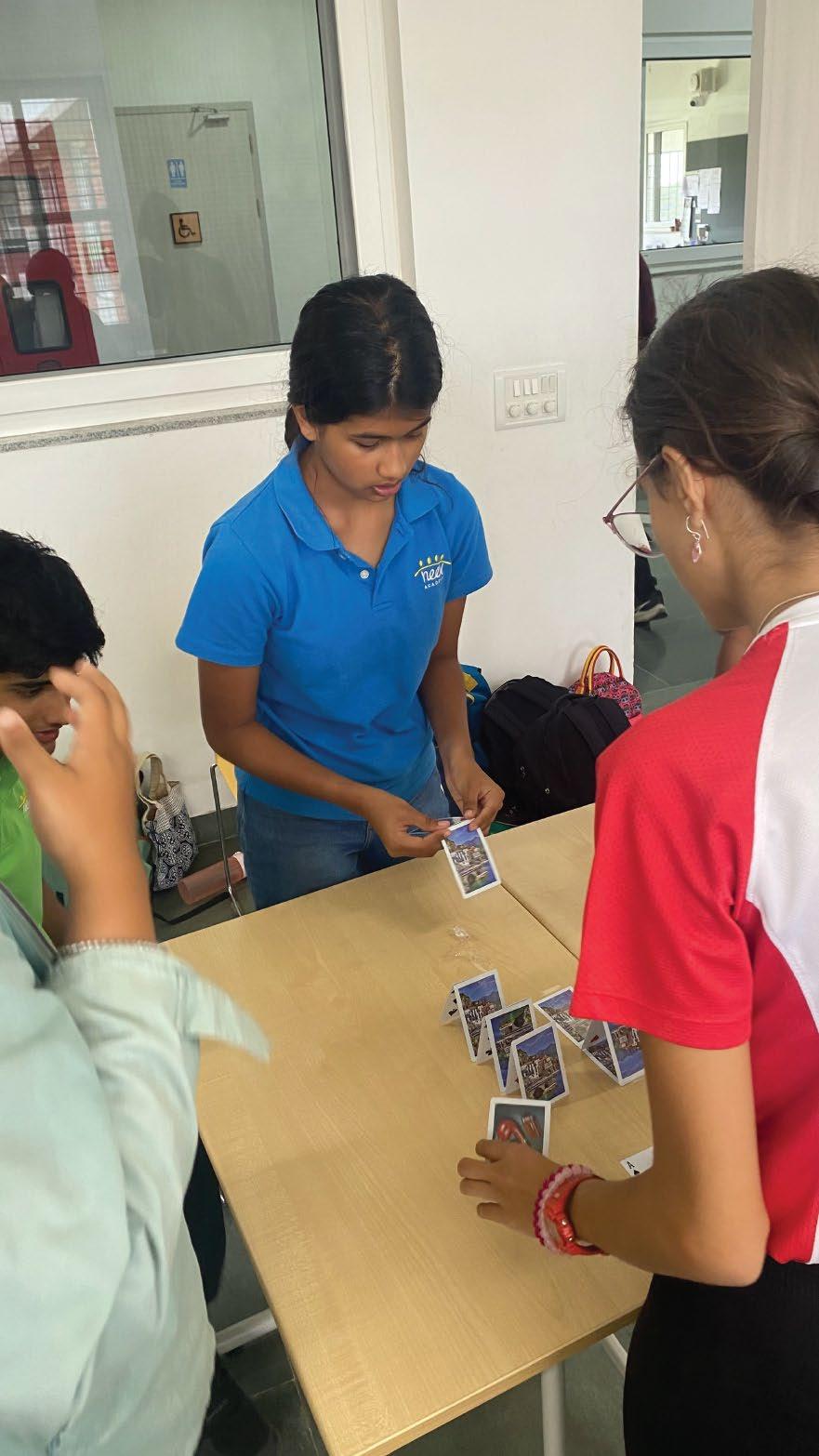
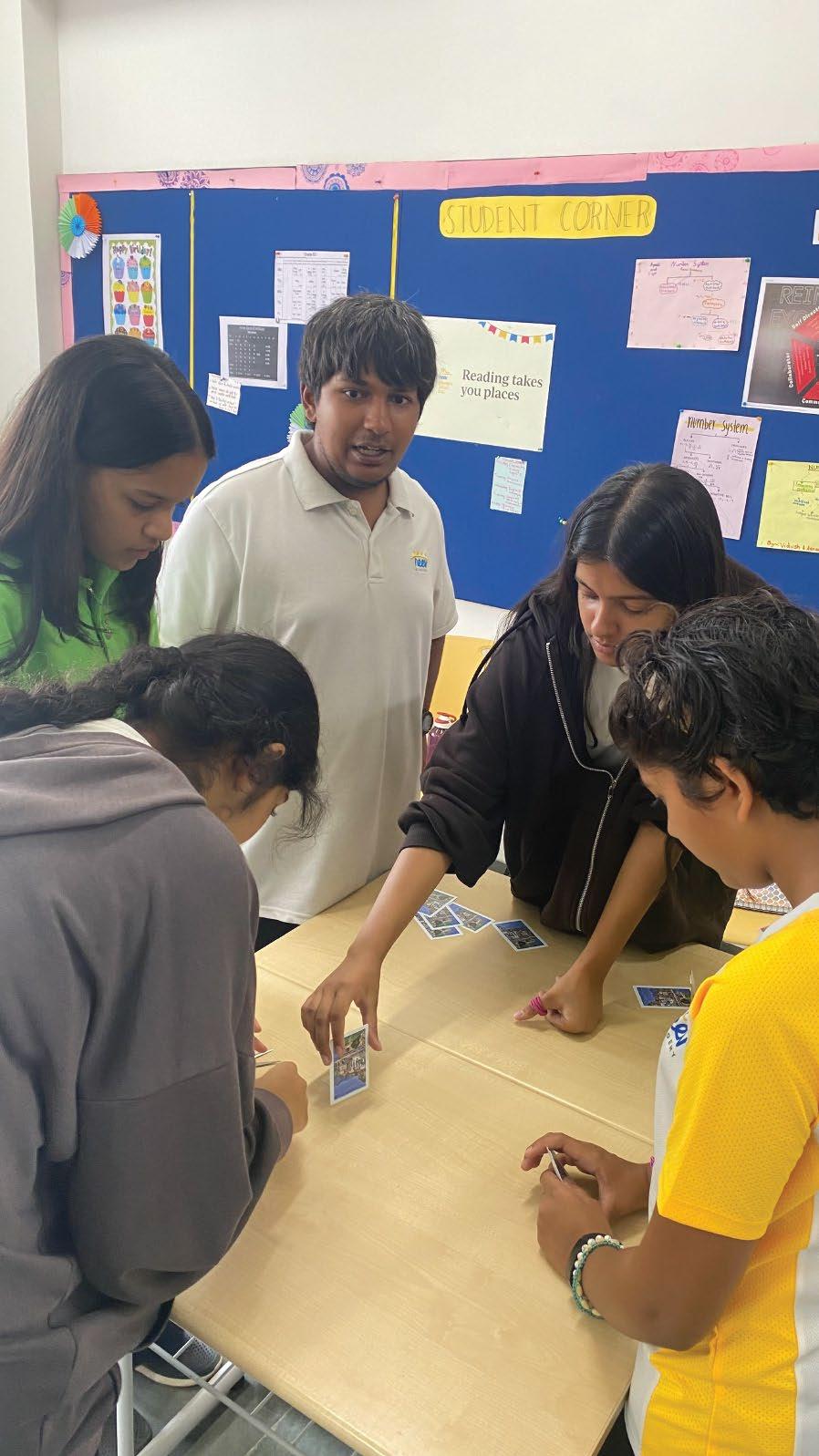
Ahmedabad University
Ashoka University
Atria University
Azim Premji University
Bennett University
BITS, Pilani
FLAME University
Krea University
Manipal Institute of Technology
Manipal University, Jaipur
O.P. Jindal Global University
PES University
Plaksha University
Shiv Nadar University
St Joseph’s College
National Institute of Design
American University
Arizona State University
Babson College
Baylor University
Binghamton University
Boston University
Brandeis University
Brown University
Bryant University
CalPoly Pomona
Case Western University
Catholic University
Colgate University
College of William & Mary
College of Wooster
Culinary Institute of America
De Montfort University
Denison University
Drexel University
Earlham College
Eckerd College
Emerson College
Emory University
Falmouth University
Fordham University
Franklin & Marshall College
George Mason University
George Washington University
Georgia Institute of Technology
Indiana University Indianapolis
Iowa State University
Ithaca College
Kelley School of Business - Indiana, Bloomington
Knox College
Massachusetts College of Art & Design
Massachusetts Institute of Technology
Michigan State University
Middlebury College
Mount Holyoke College
New Jersey University of Technology
New York University
orth Carolina State University
Northeastern University
Occidental College
Ohio State University
Ohio Wesleyan University
OTIS College of Art & Design
Pace University
Penn State University
Pratt Institute
Purdue University
Radboud University
Rhode Island School of Design
Rensselaer Polytechnic Institute
Rochester Institue of Technology
Rollins College
Rutgers University
San Diego State University
Savannah College of Art and Design
School of the Art Institute of Chicago
Simmons University
Smith College
Stanford University
Stevens Institute of Technology
St. Olaf College
SUNY, Binghamton University
Swarthmore College
Syracuse University
Temple University
Texas A&M University
Texas Tech University
The New School, Parsons
Tillburgh University
Trinity University
University at Buffalo
University of Alabama at Birmingham (UAB)
University of Arizona
University of California, Berkeley
University of California, Davis
University of California, Los Angeles
University of California, Riverside
University of California, San Diego
University of California, Santa Barbara
University of California, Santa Cruz
University of Chicago
University of Connecticut
University of Illinois Urbana-Champaign
University of Maryland
University of Massachusetts, Amherst
University of Michigan, Dearborn
University of Michigan, Ann Arbor
University of Minnesota, Duluth
University of Minnesota, Twin Cities
University of Pittsburgh
University of Rochester
University of San Diego
University of San Francisco
University of South Florida
University of Southern California
University of Texas A&M
University of Texas at Austin
University of Texas at Dallas
University of Texas at Tyler
University of the Atlantic
University of Virginia
University of Washington
University of Wisconsin-Madison
Virginia Polytechnic Institute
Washington University in St. Louis
Wentworth Institute of Technology
Wheaton College
Wichita State University
Birkbeck University of London
Birmingham City University
Brunel University London
Cardiff University
City, University of London
Coventry University
Durham University
Hult International Business School
Imperial College London
King's College London
Kingston University
Lancaster University
Leeds Trinity University
London School of Economics and Political
Science
London Southbank University
Loughborough University
Scholarships are ranging from $3,000 per year to $30,000 per year
Northumbria University
Oxford Brookes University
Queen Mary University of London
Queen's University Belfast
Royal Holloway
Sheffield Hallam University
SOAS University of London
Solent University
Trinity College Dublin
University College London
University of Aberdeen
University of Bath
University of Birmingham
University of Brighton
University of Bristol
University of Dundee
University of East London
University of Edinburgh
University of Exeter
University of Glasgow
University of Hertfordshire
University of Hull
University of Leeds
University of Liverpool
University of Manchester
University of Newcastle
University of Nottingham
University of Plymouth
University of Portsmouth
University of St. Andrews
University of Strathclyde
University of Surrey
University of Sussex
University of the Arts London
University of the Creative Arts London
University of Warwick
University of Westminster
Bond University
Monash University
University of Melbourne
University of Sydney
Concordia University
Dalhousie University
McGill University
McMaster University
Ontario College of Art & Design
Queen's University
Simon Fraser University
University of Alberta
University of British Columbia
University of Guelph
University of Ottawa
Lasalle College of the Arts
Nanyang Academy of Fine Arts
Nanyang Technological University
National University of Singapore
Amsterdam University
École Polytechnique
Eindhoven University of Technology
IE University Spain
Leiden University
Maastricht University
TU/ Delft
Twente University
University of Groningen
Utrecht University
Nuova Accademia di Belle Arti (NABA)
University of Nottingham
Georgia State University
Hampshire College
University of California, Merced
Middlesex University
Newcastle University
University of Reading
University of Sheffield
University of Southampton
University of Toronto
University of Waterloo
Wilfred Laurier
York University
Weill Cornell Medicine - Qatar
National University of Ireland, Galway
Royal College of Surgeons in Ireland
Hong Kong University
